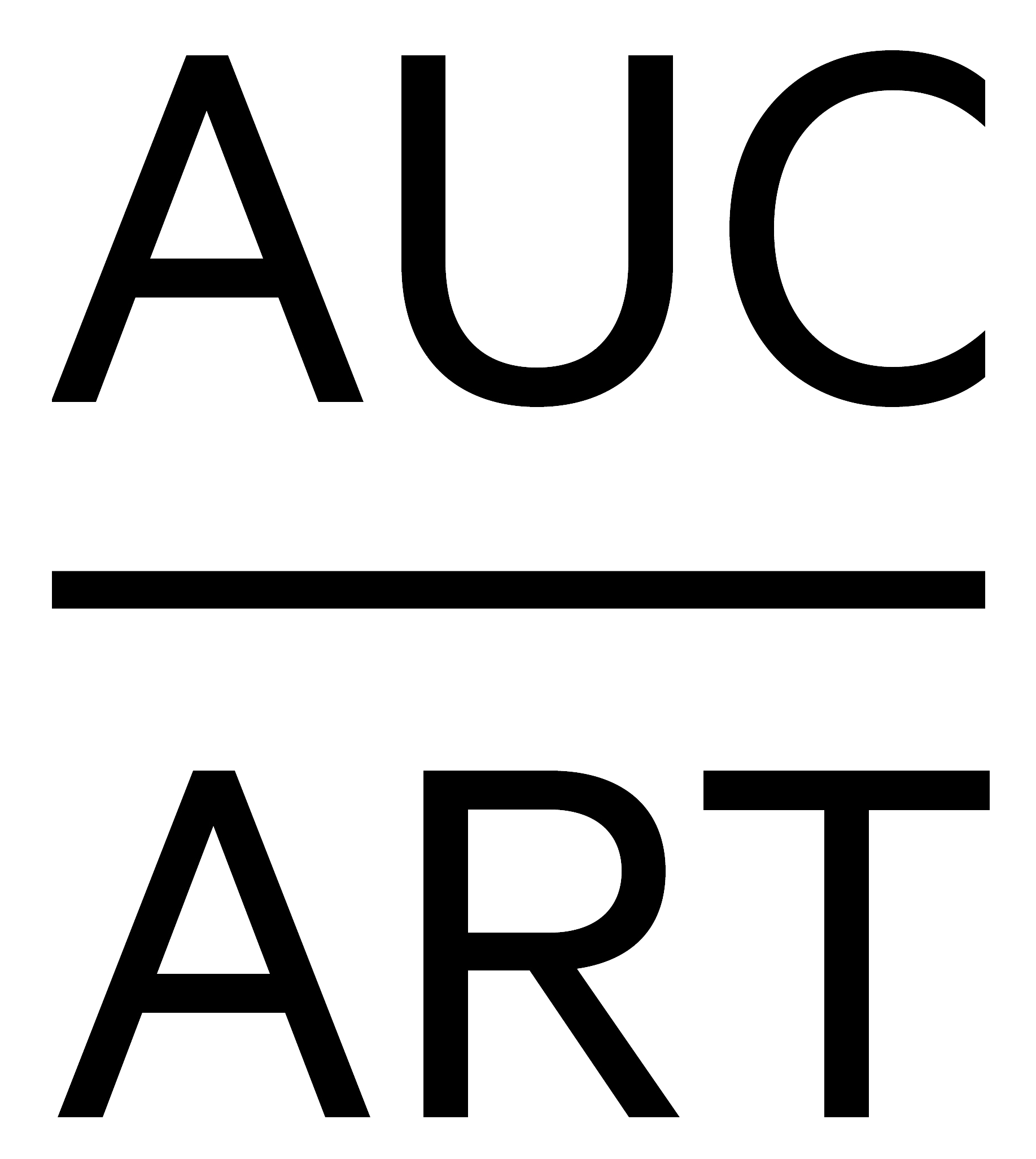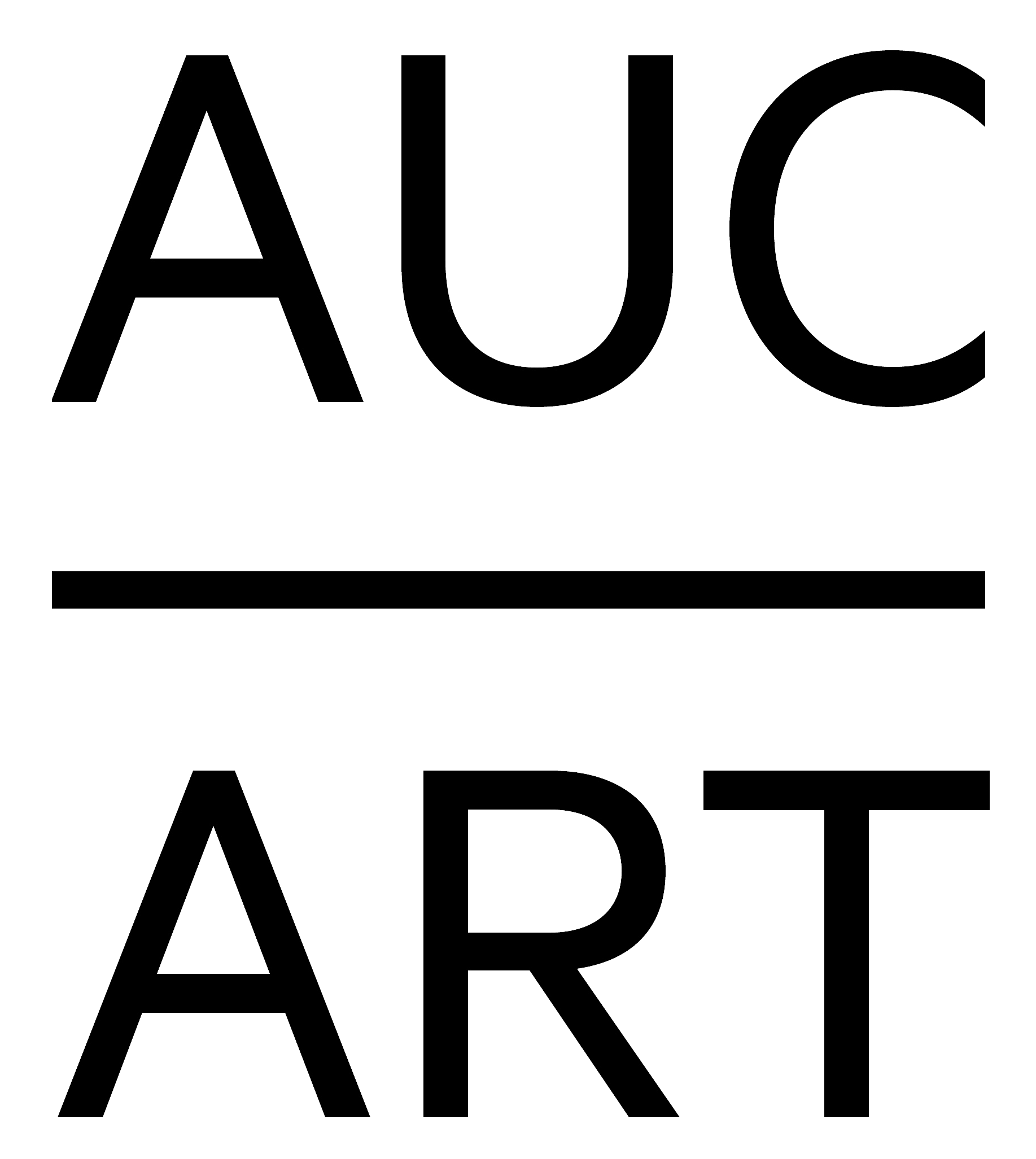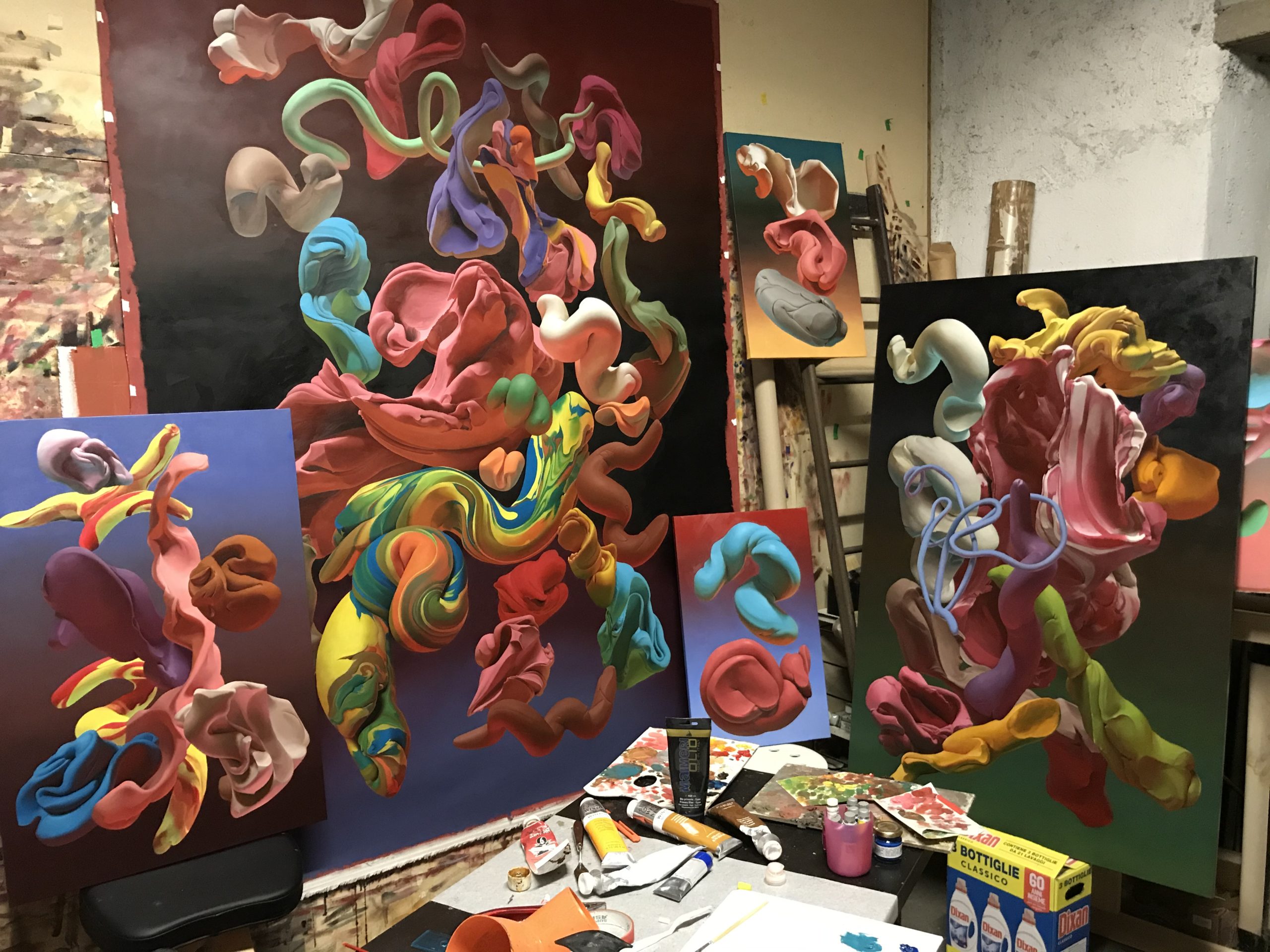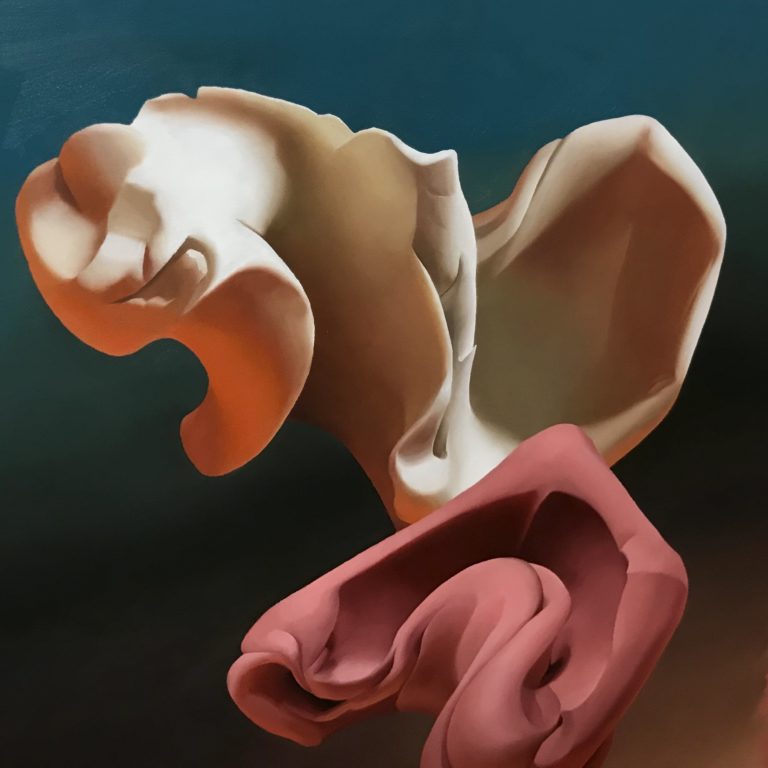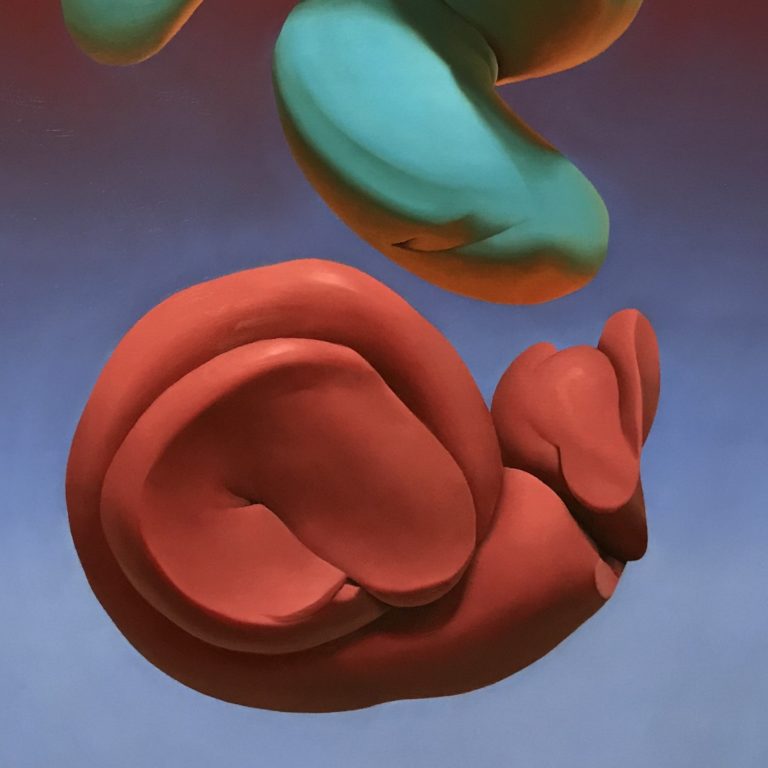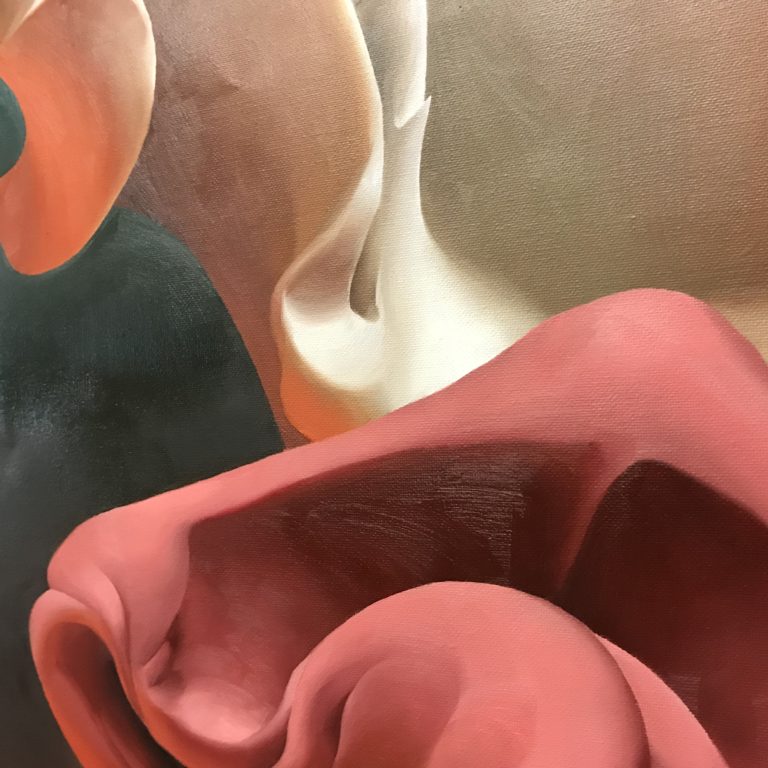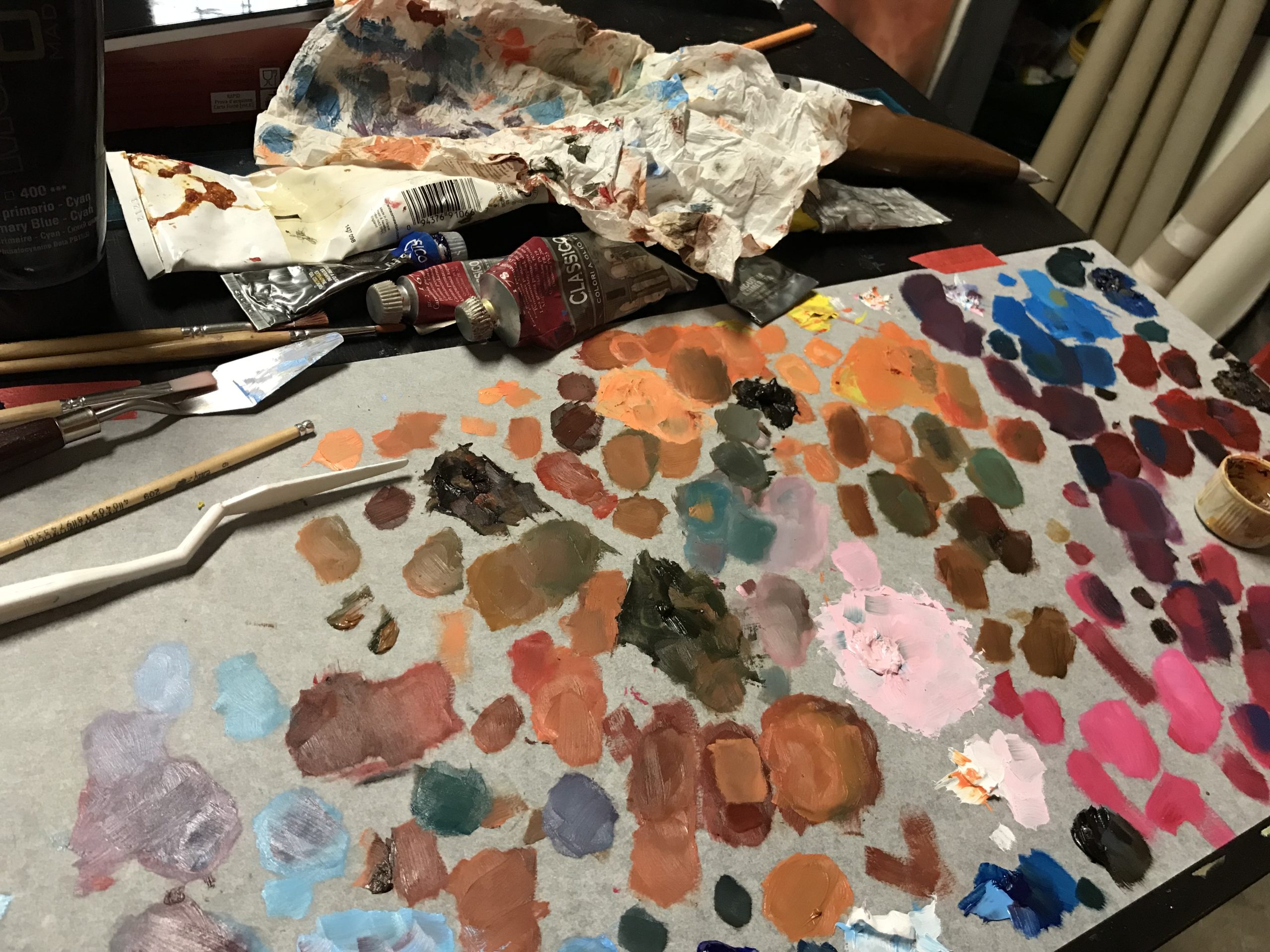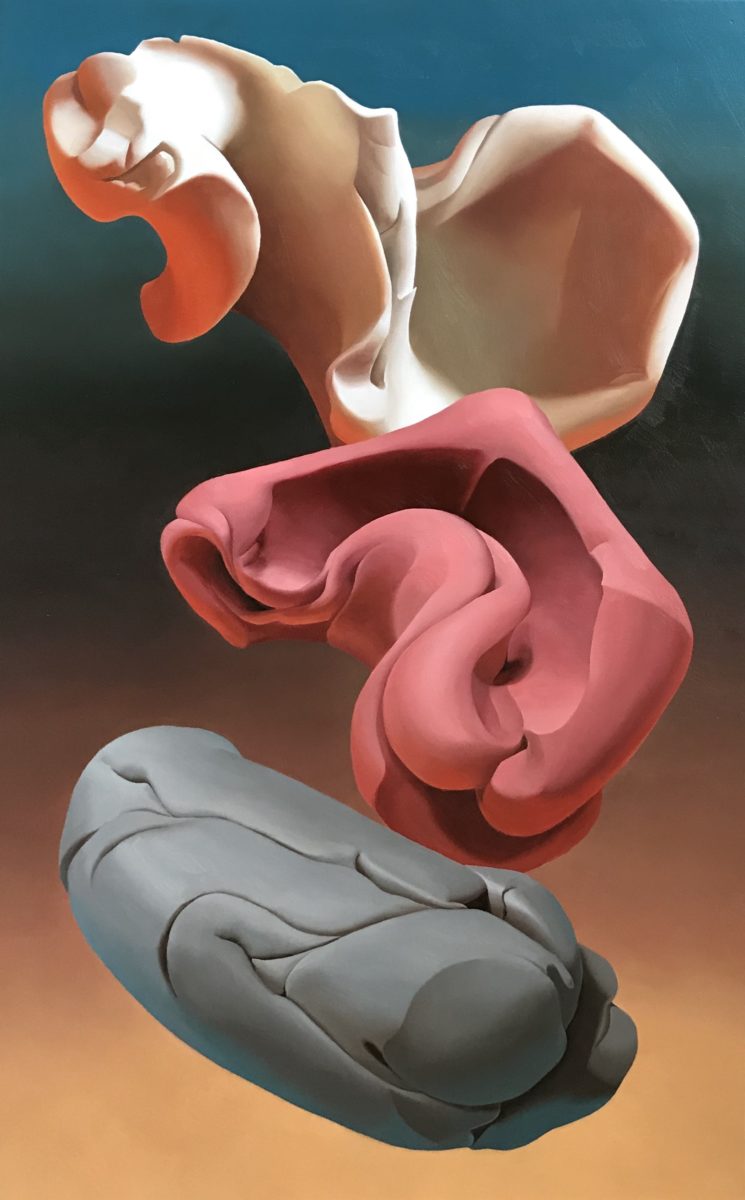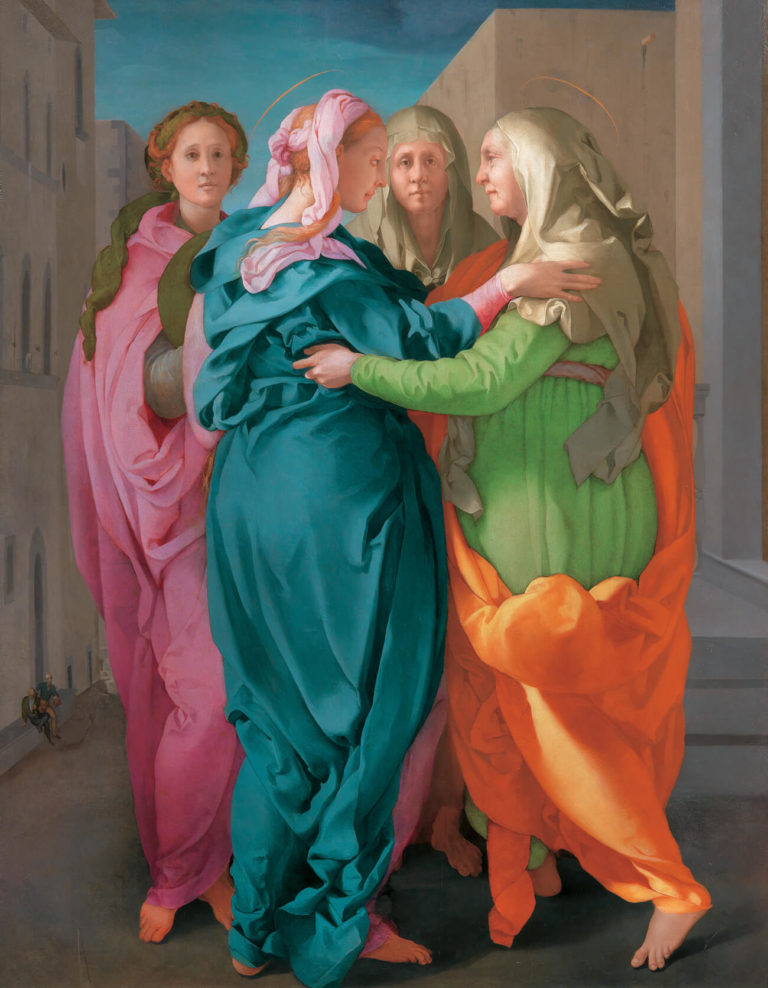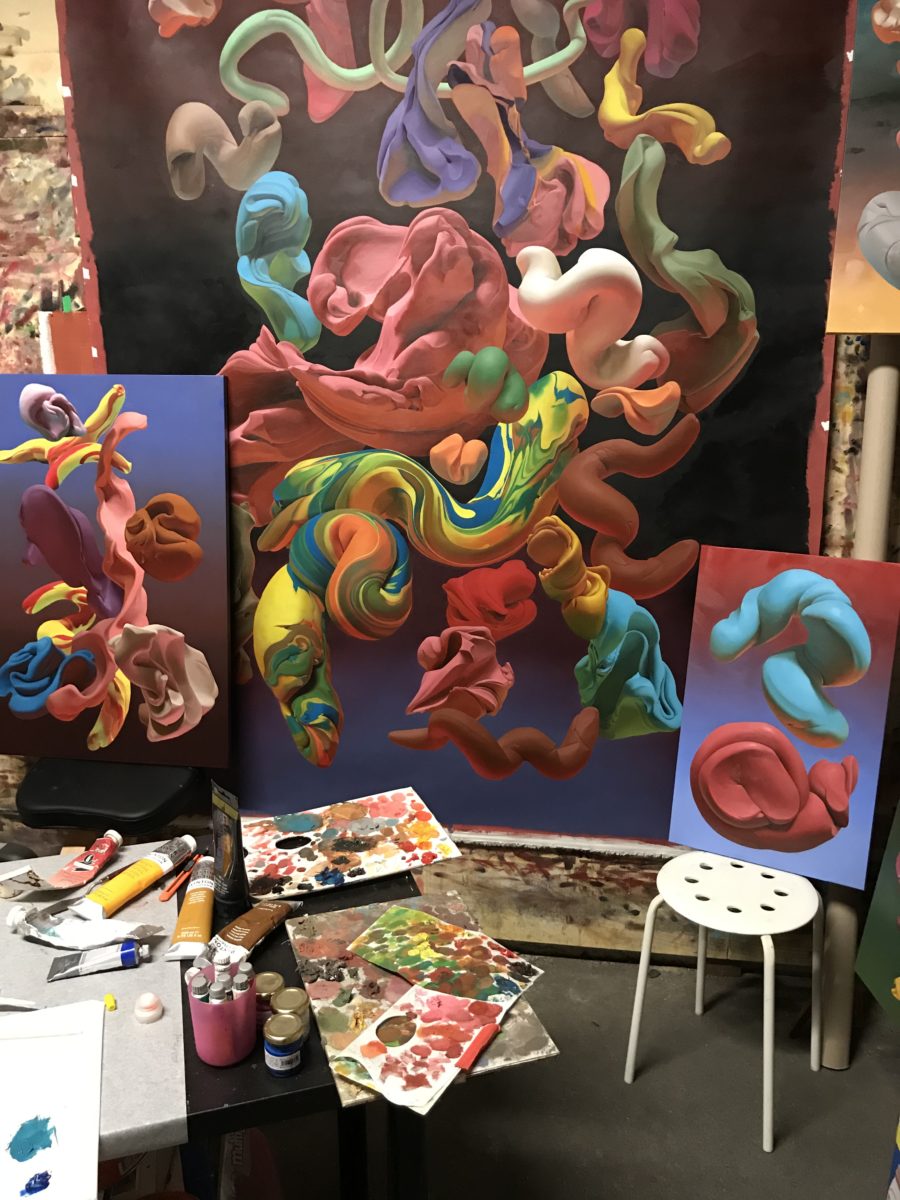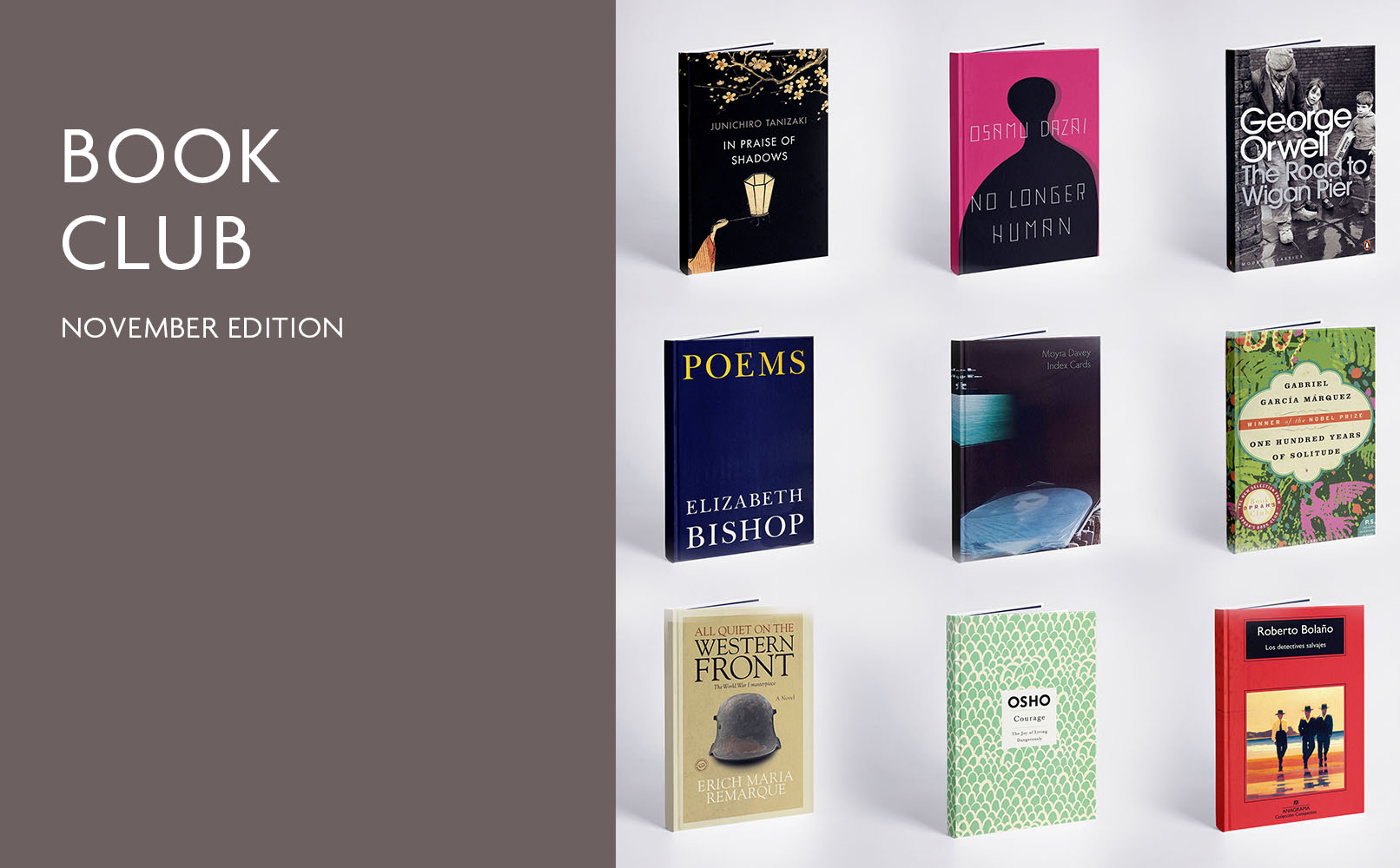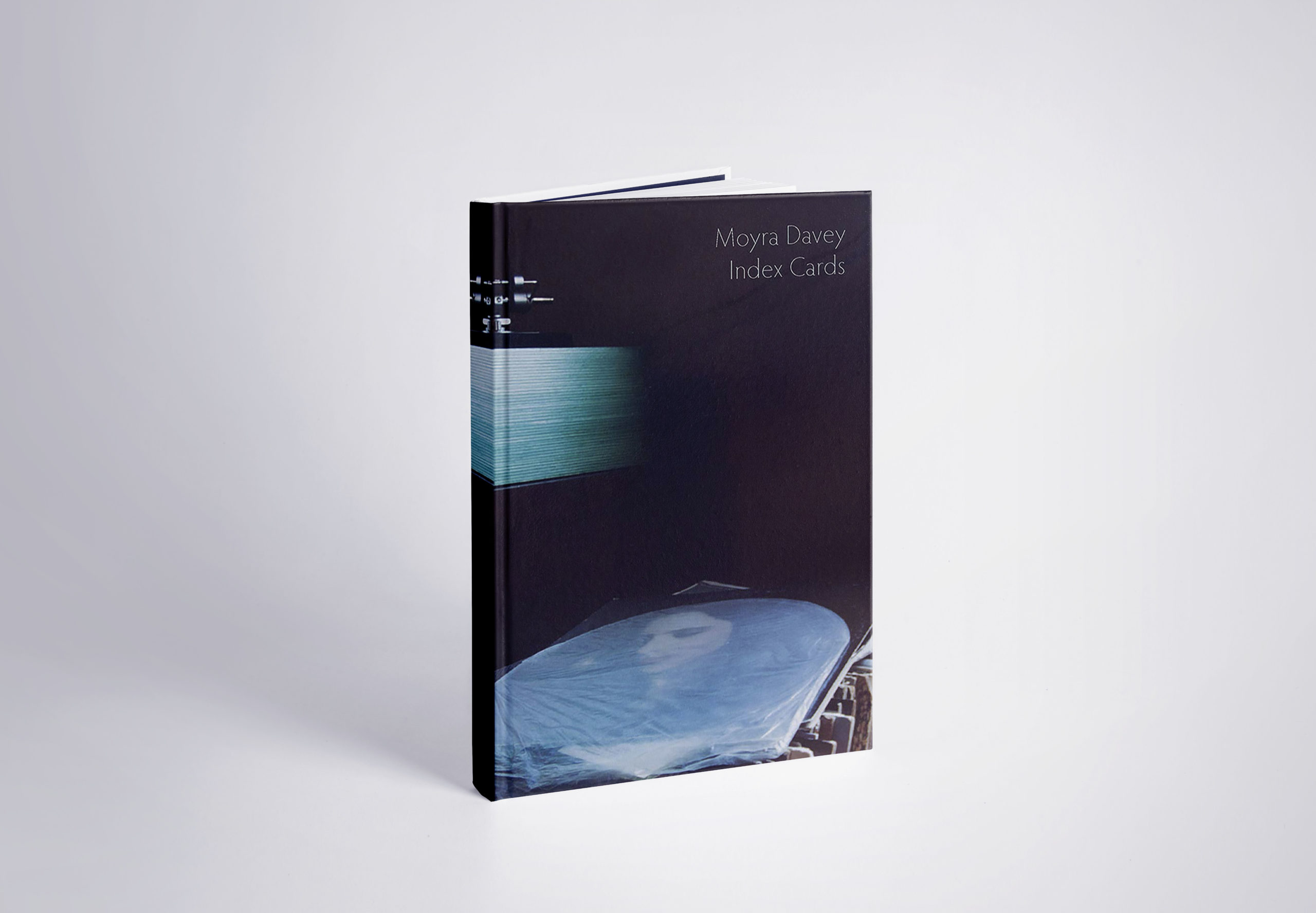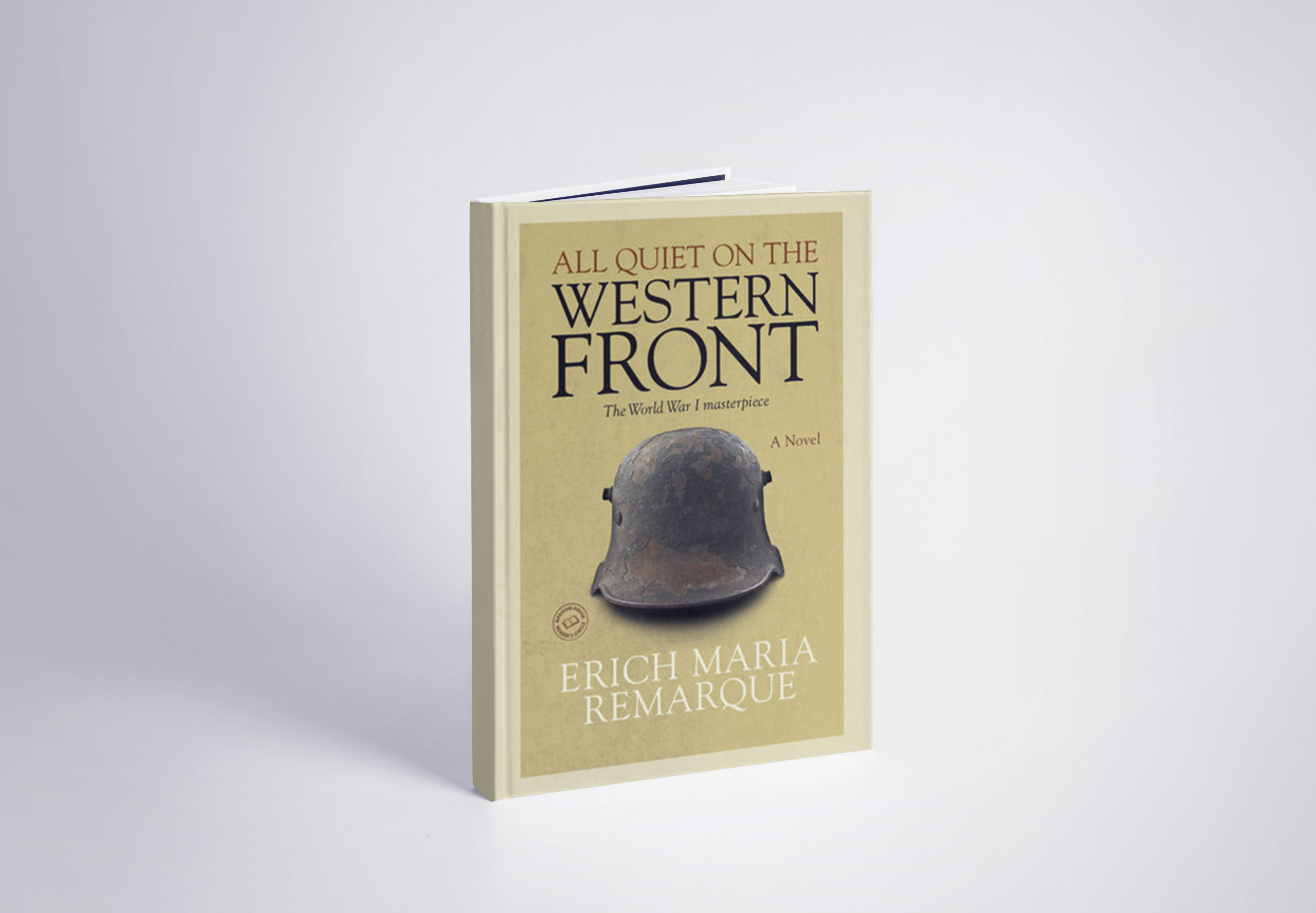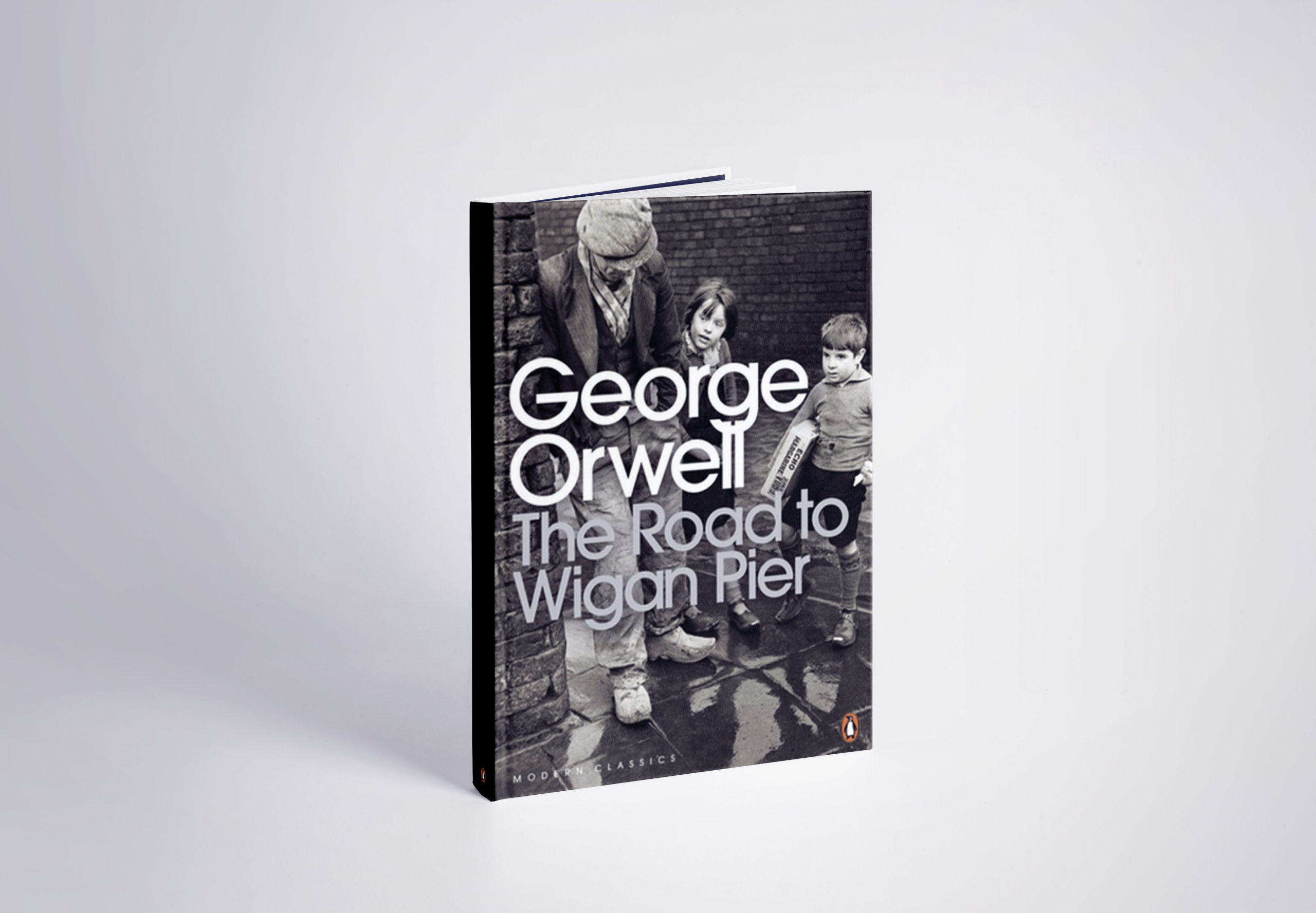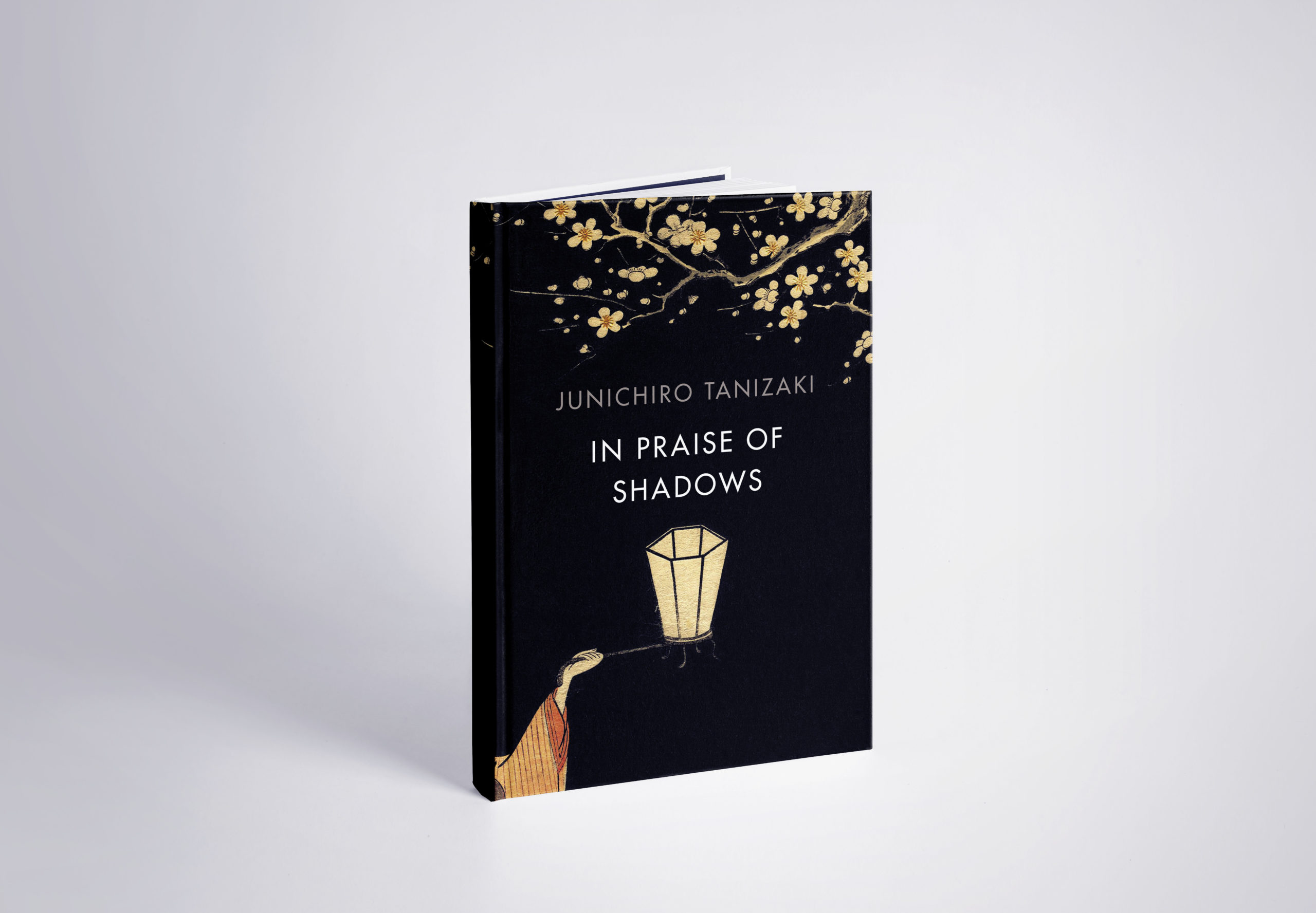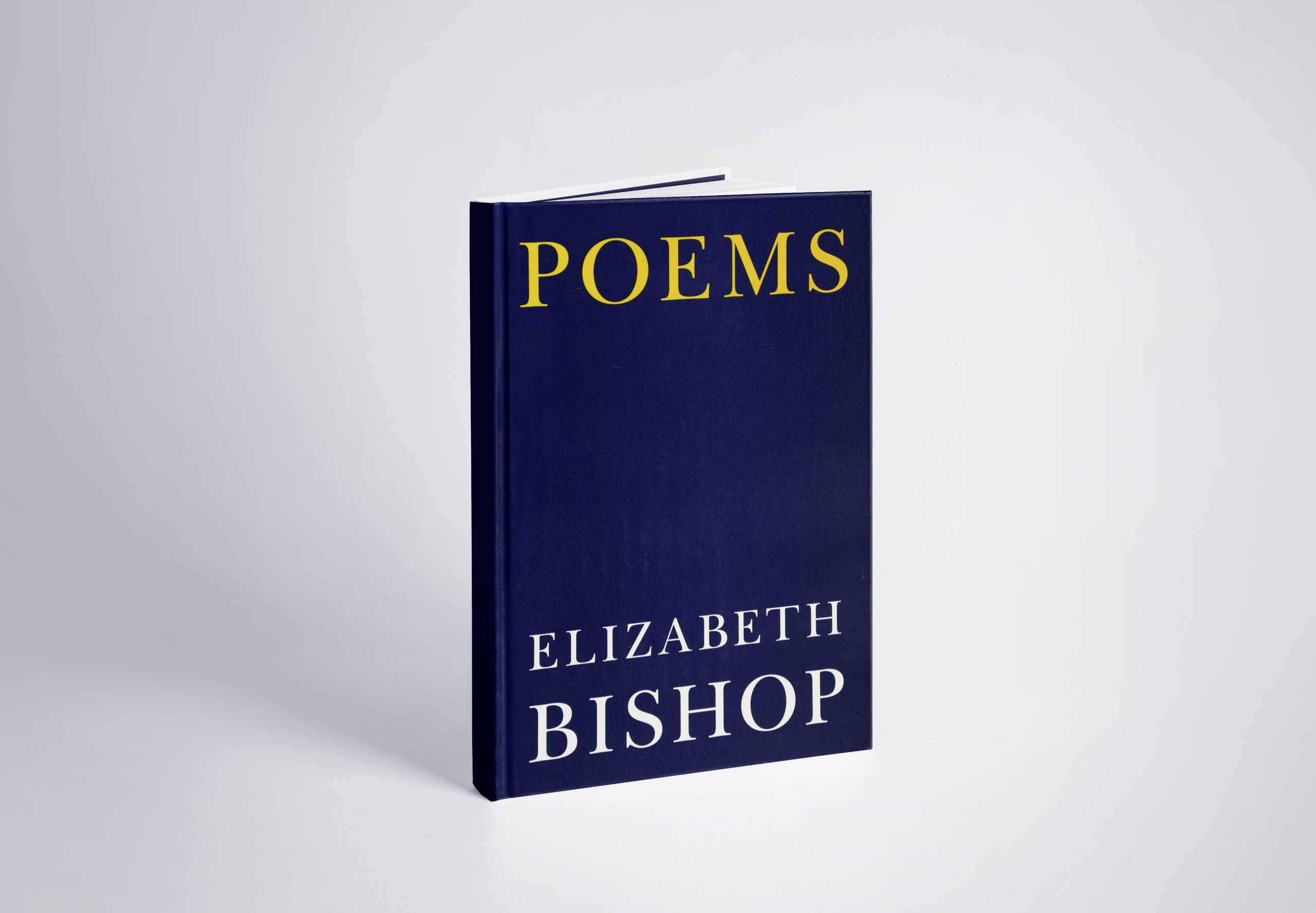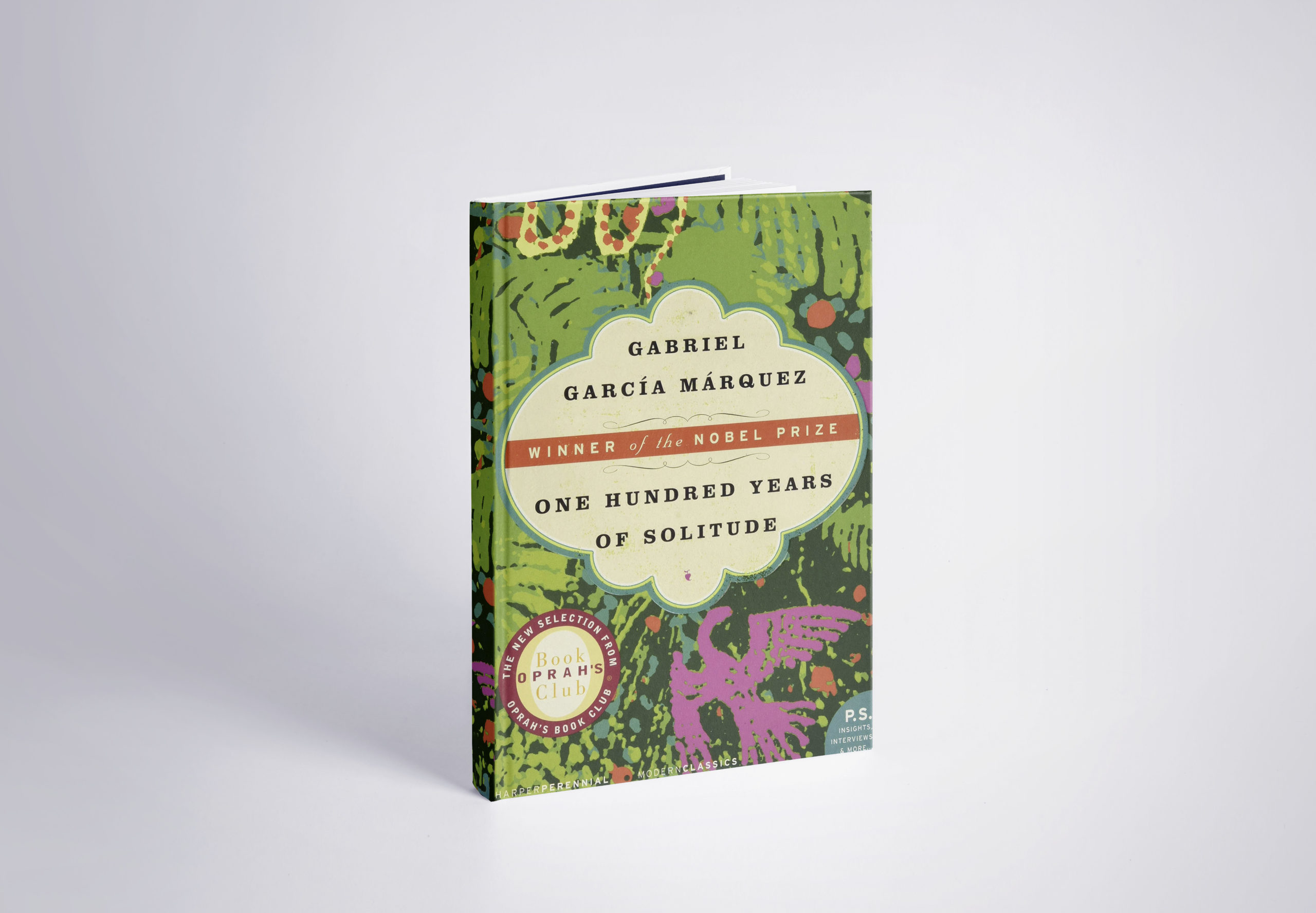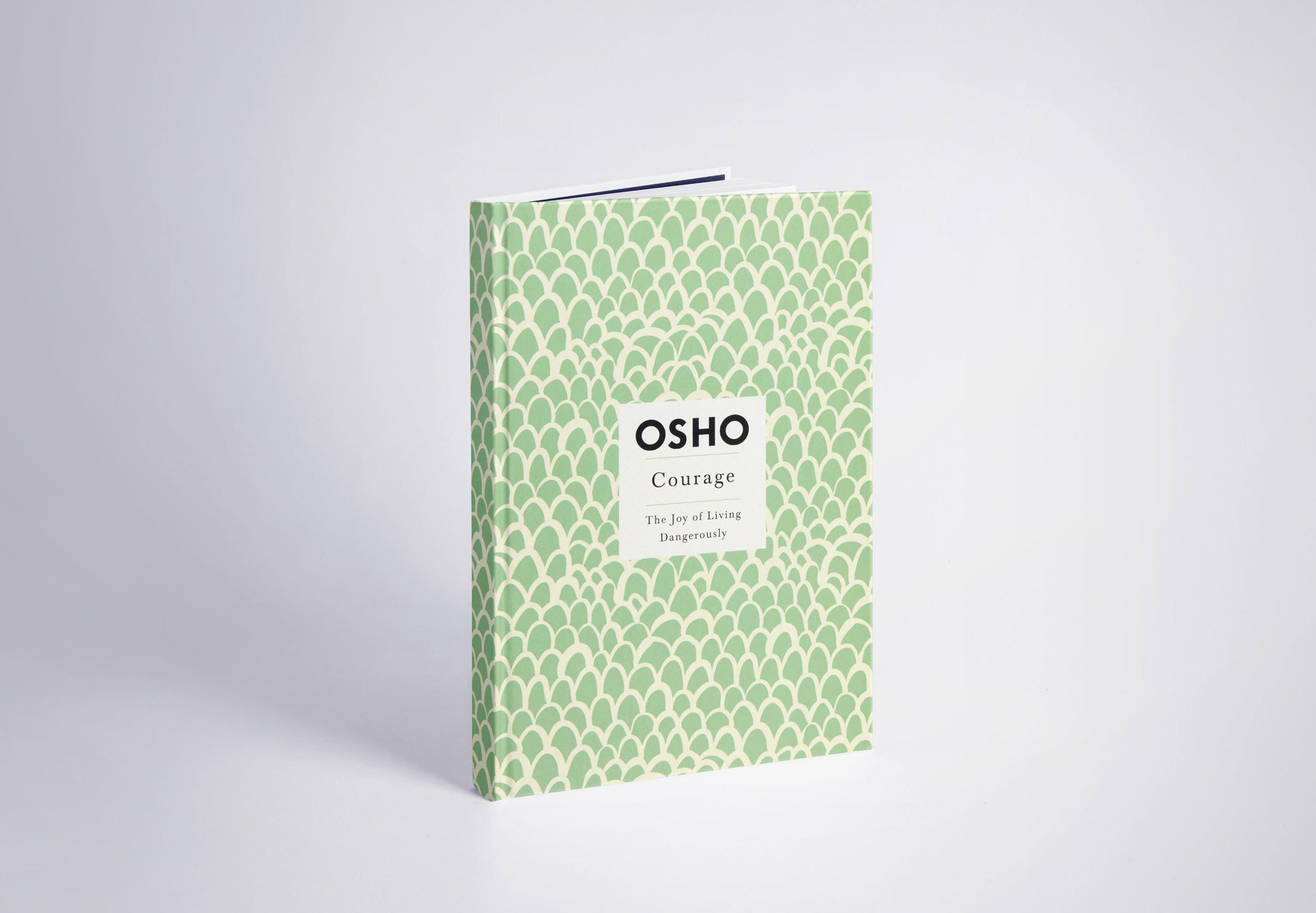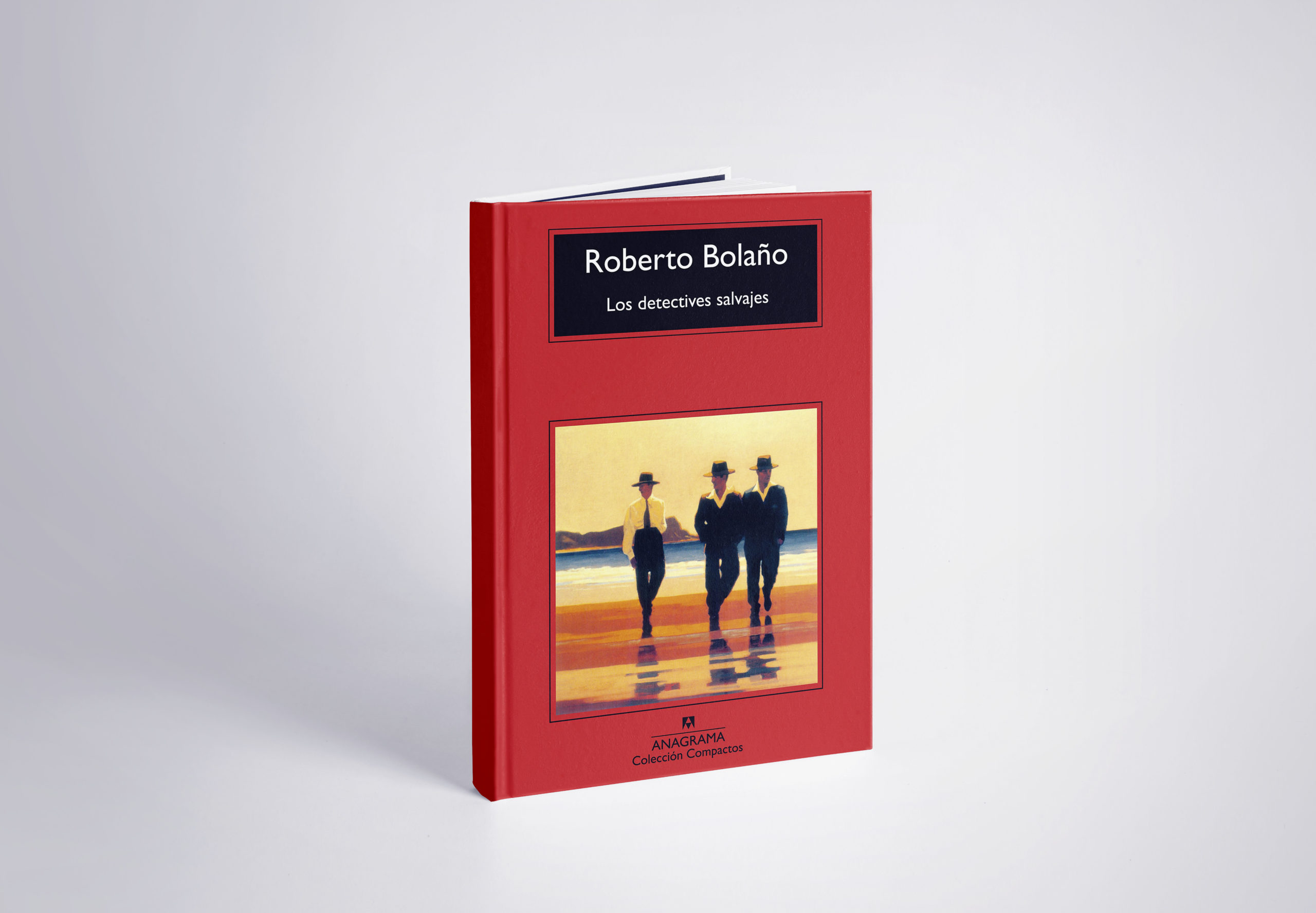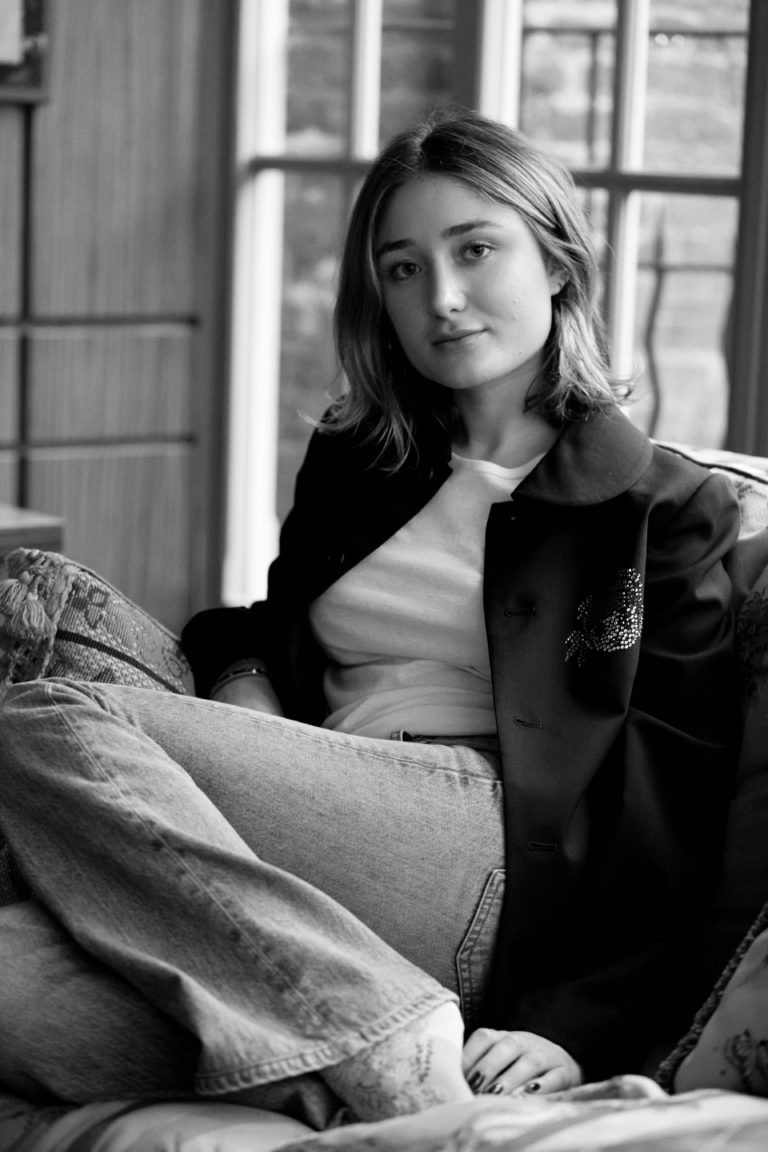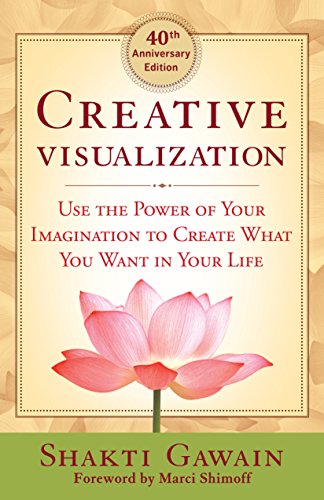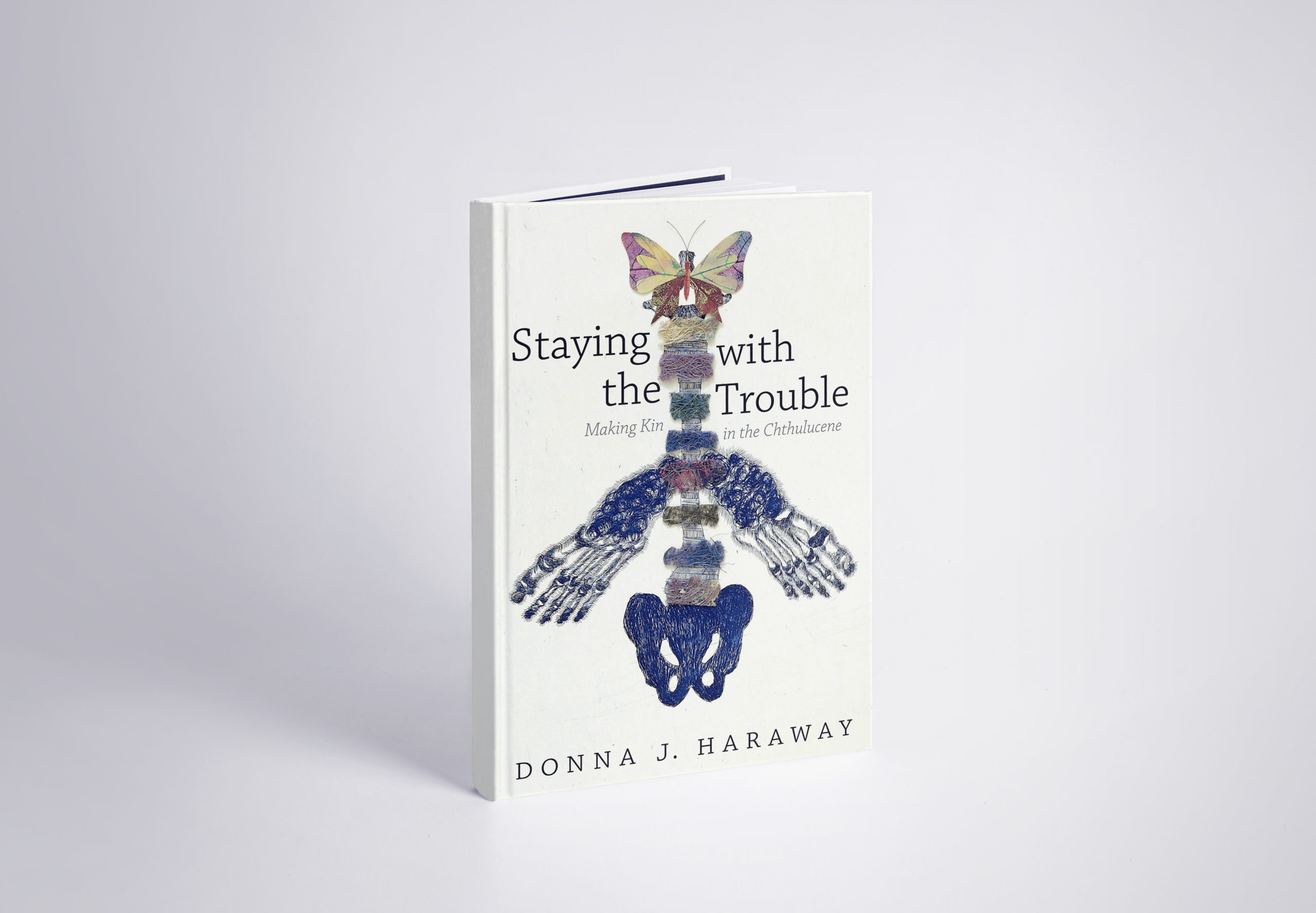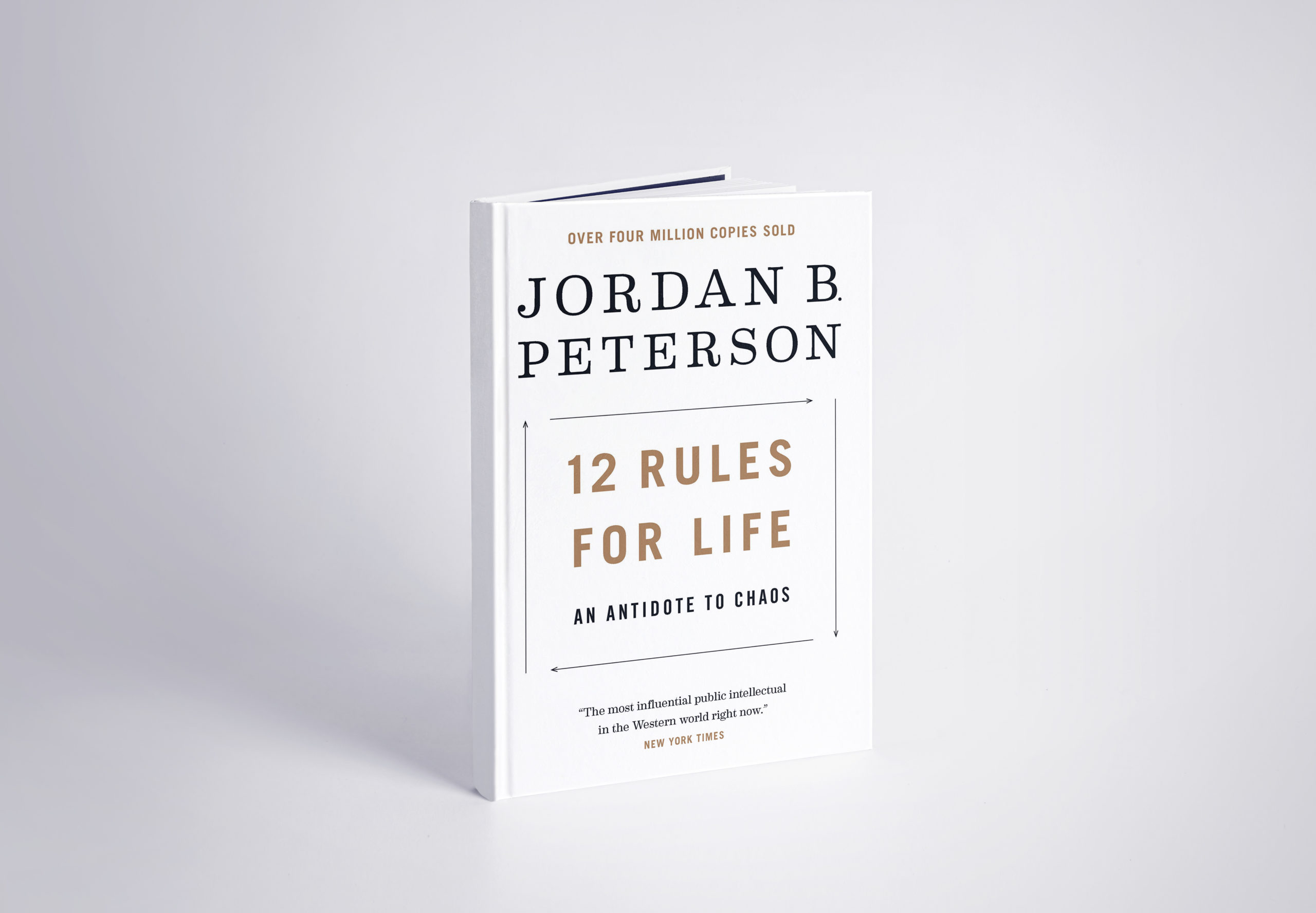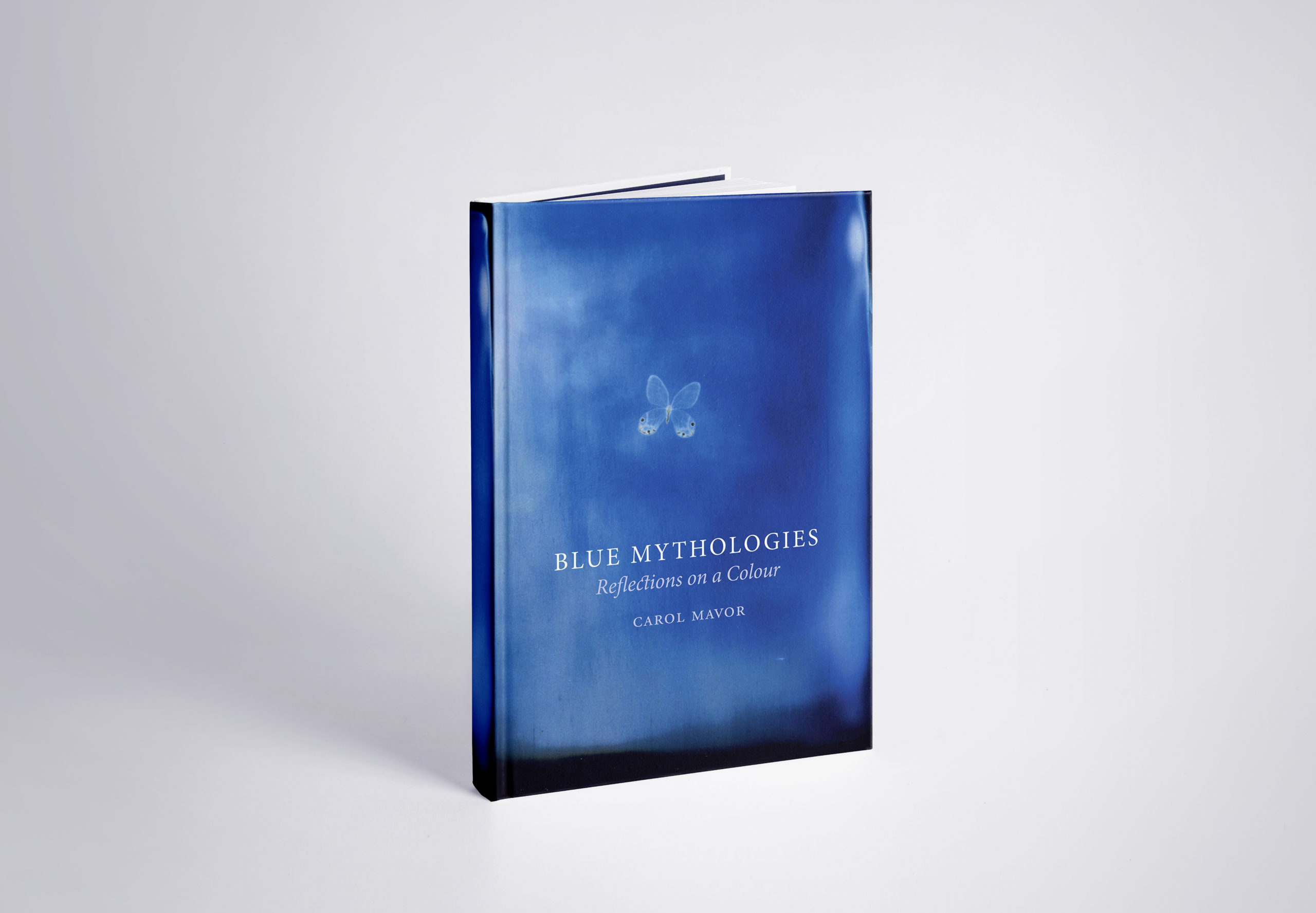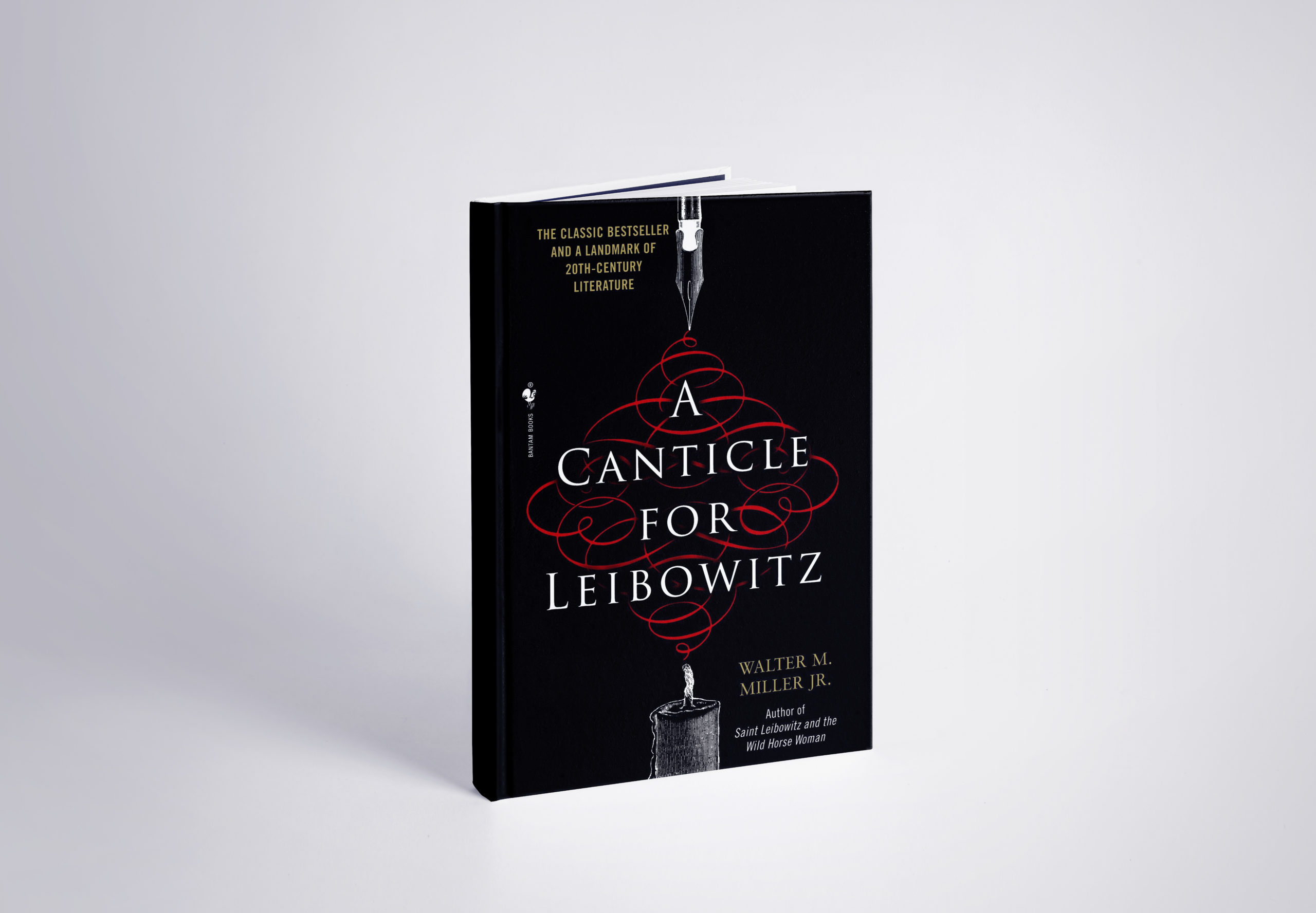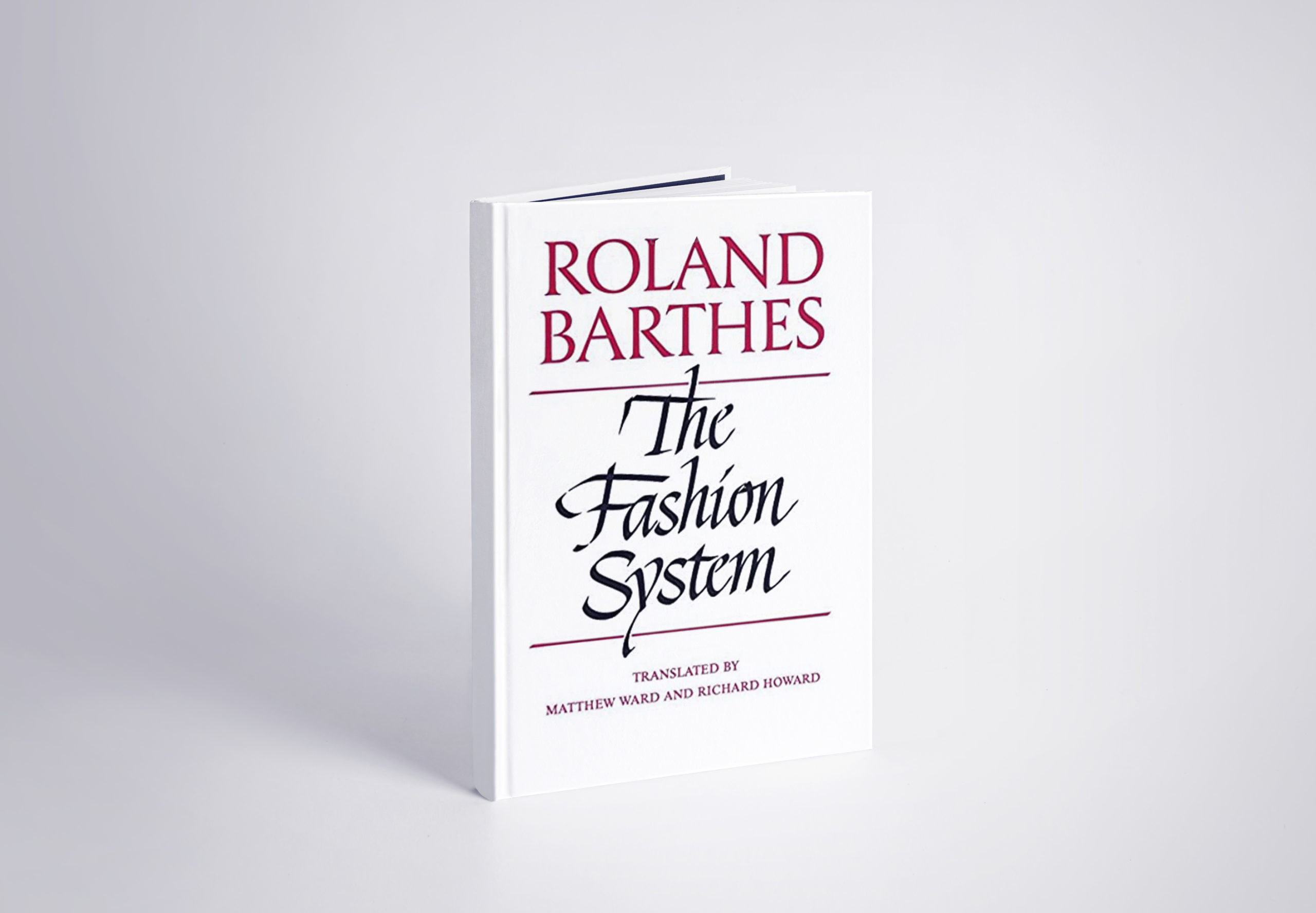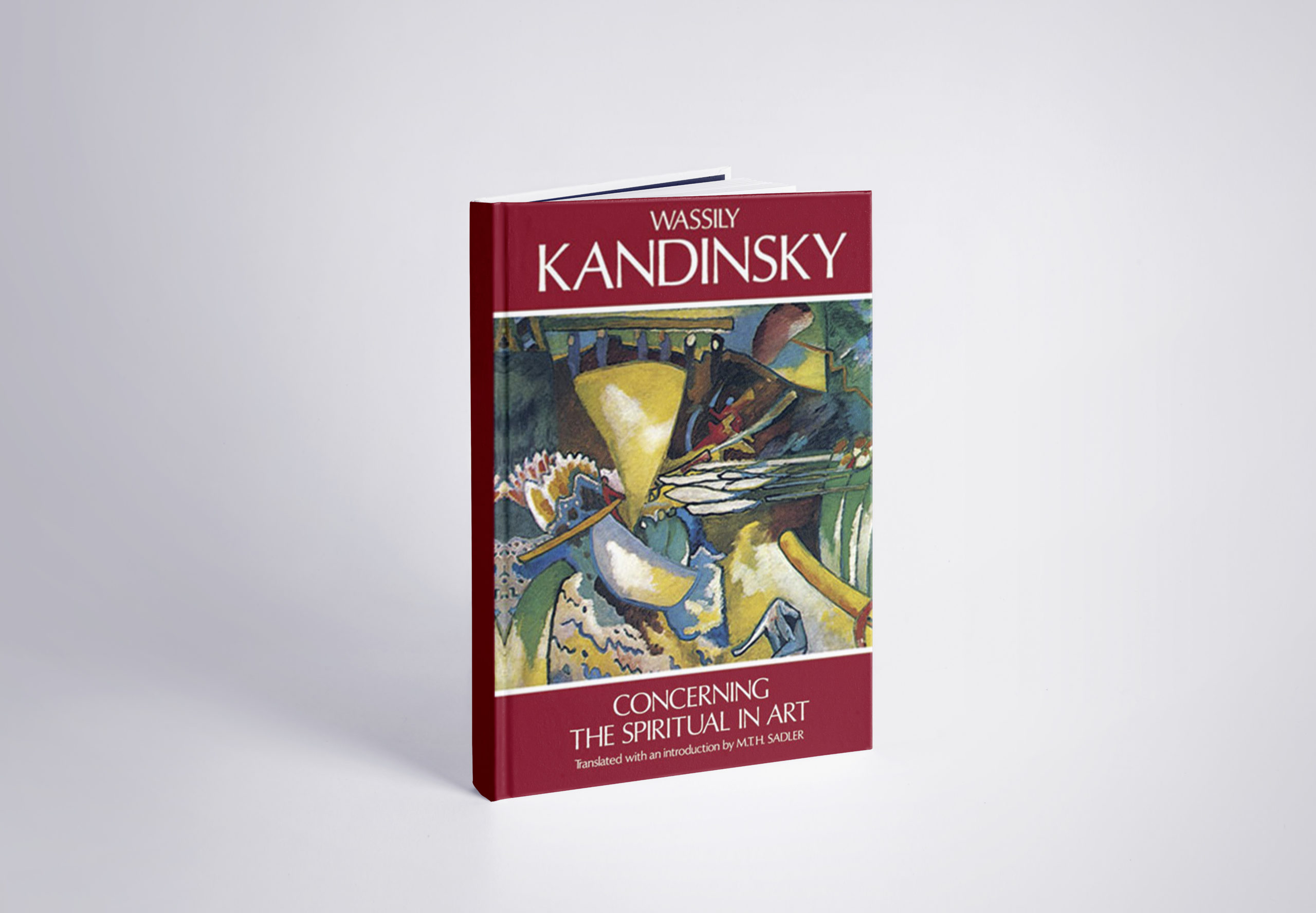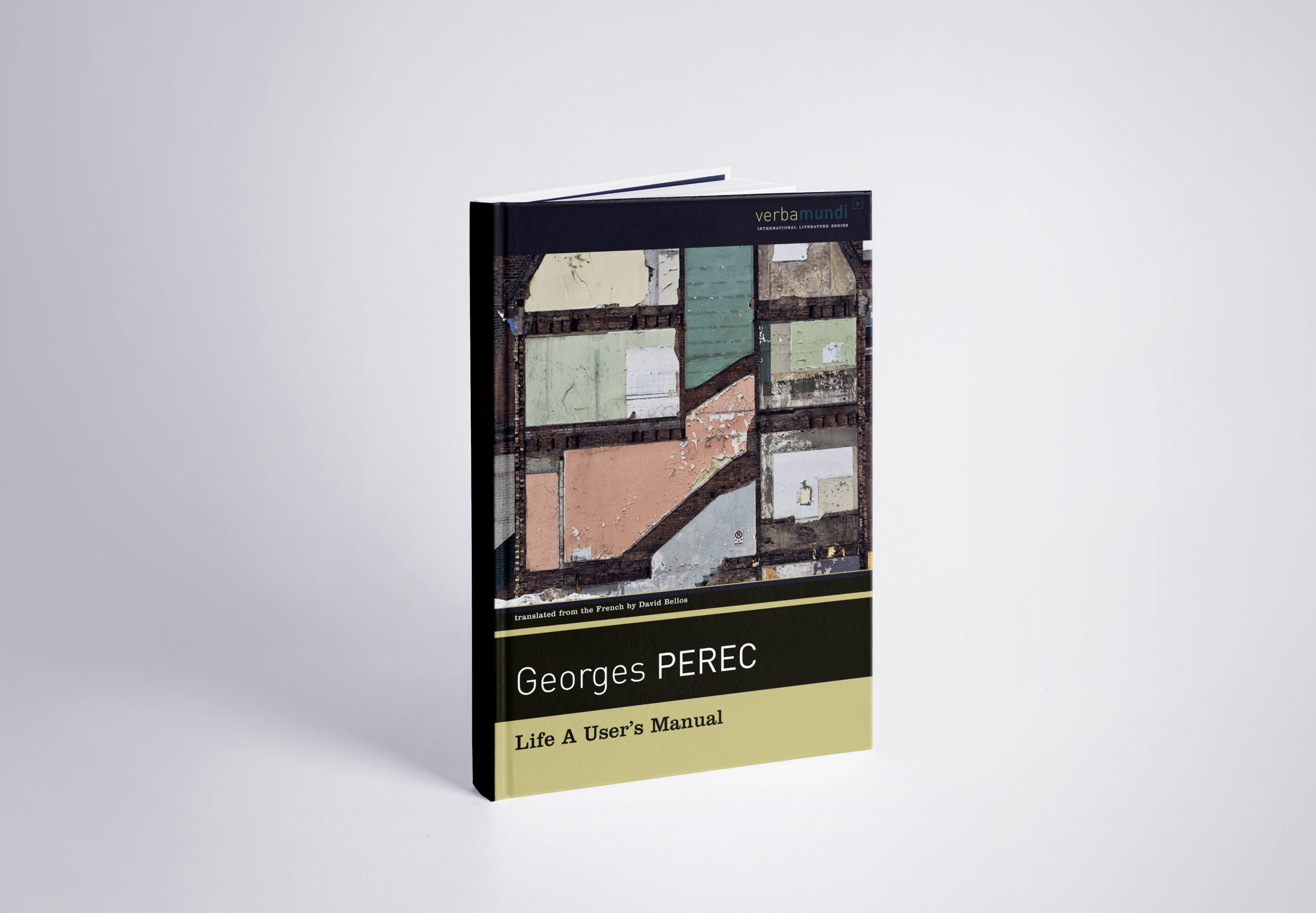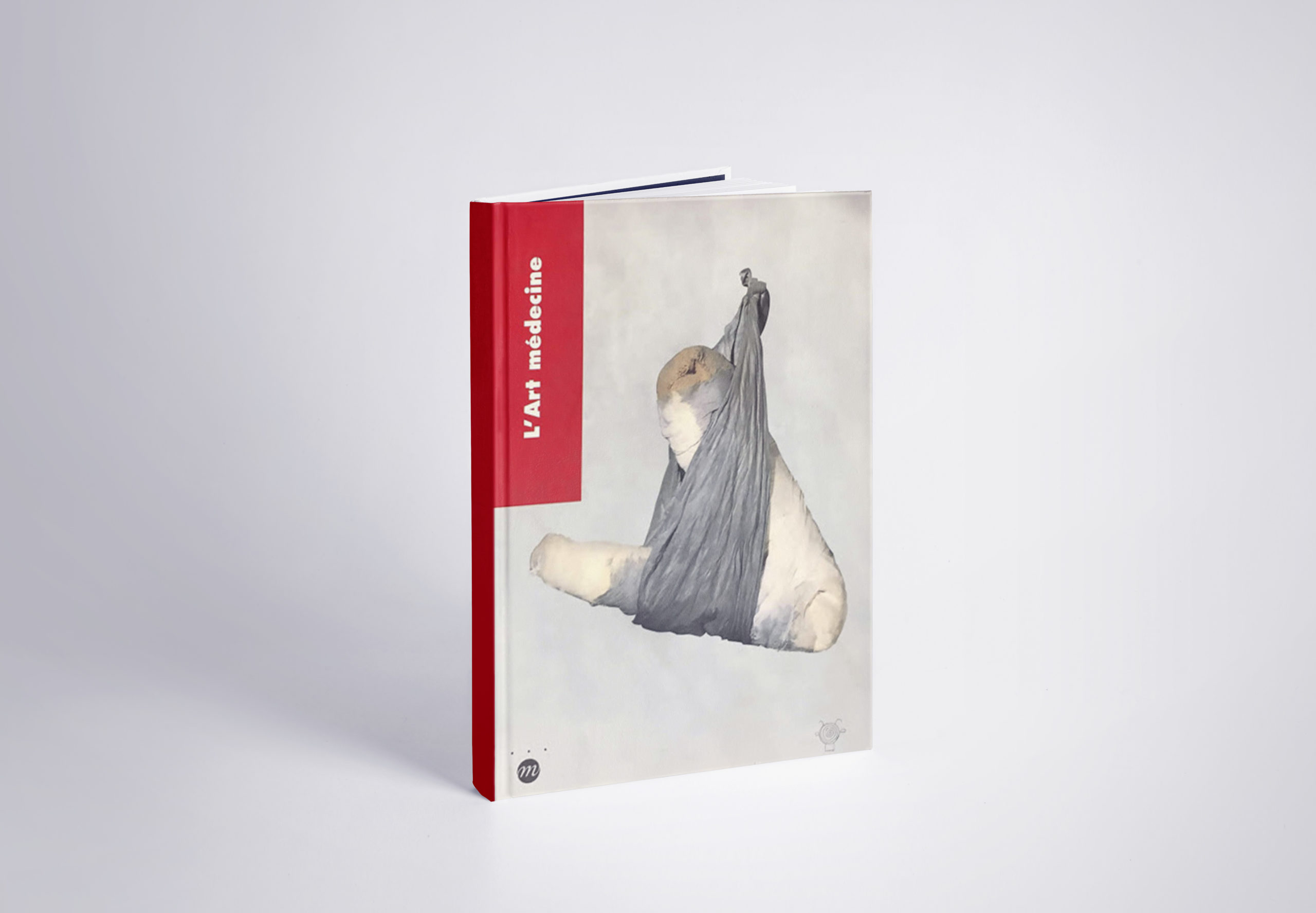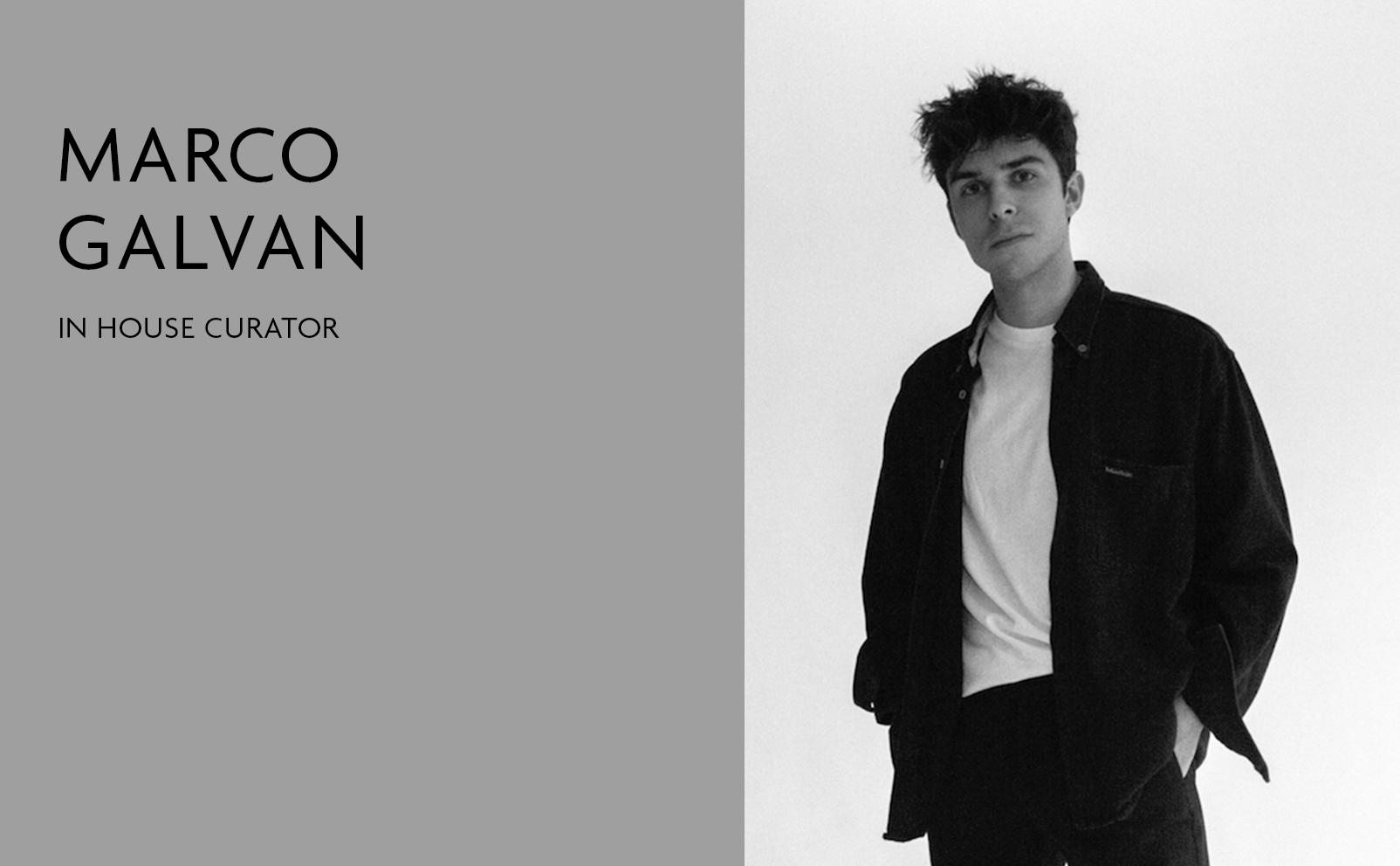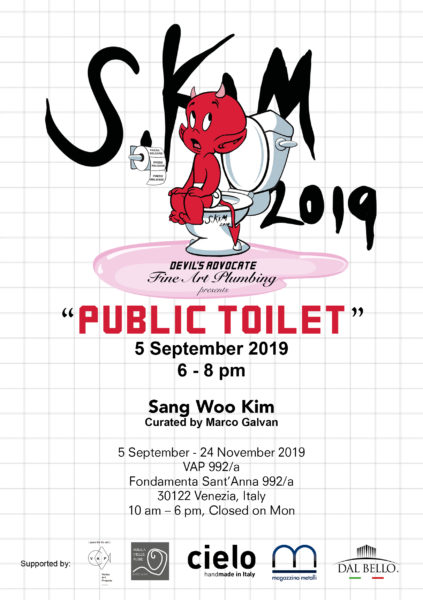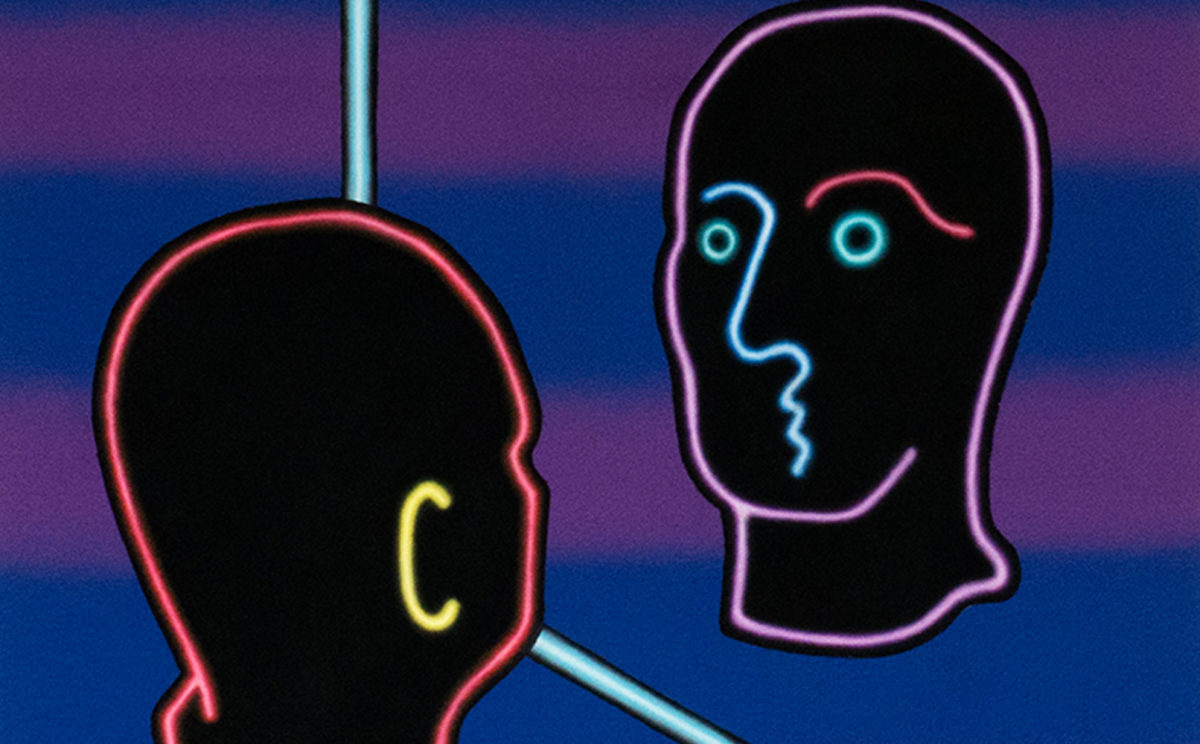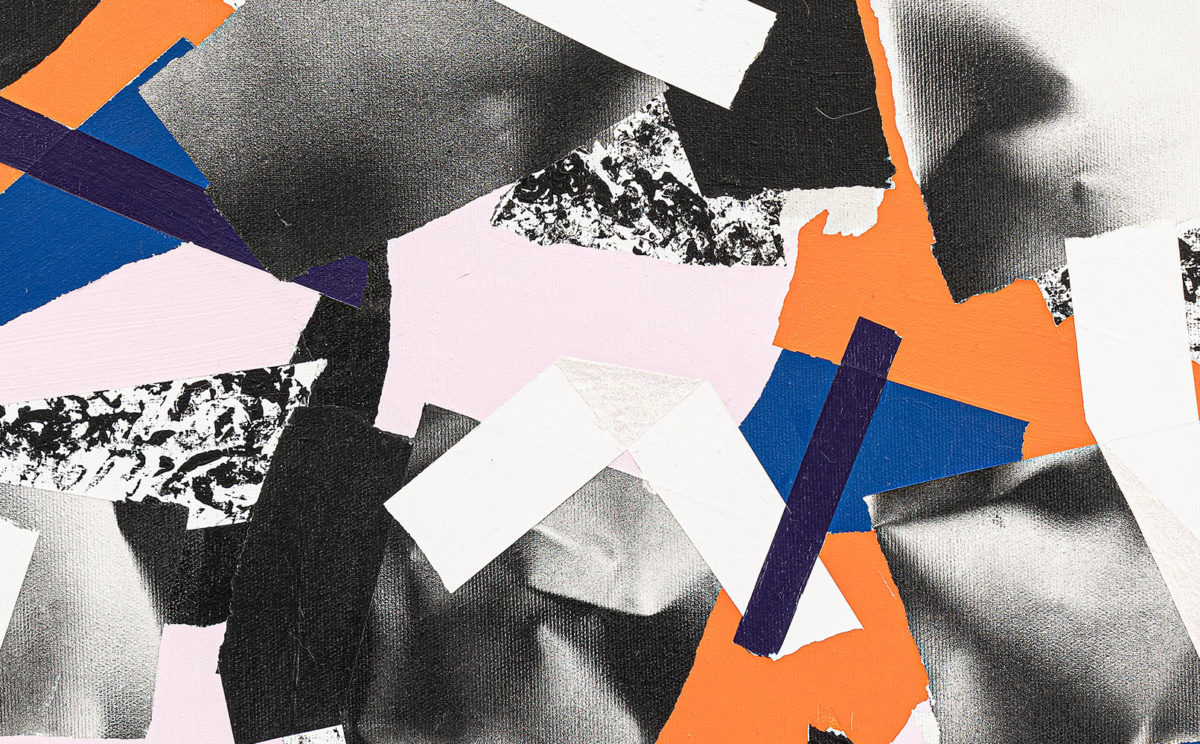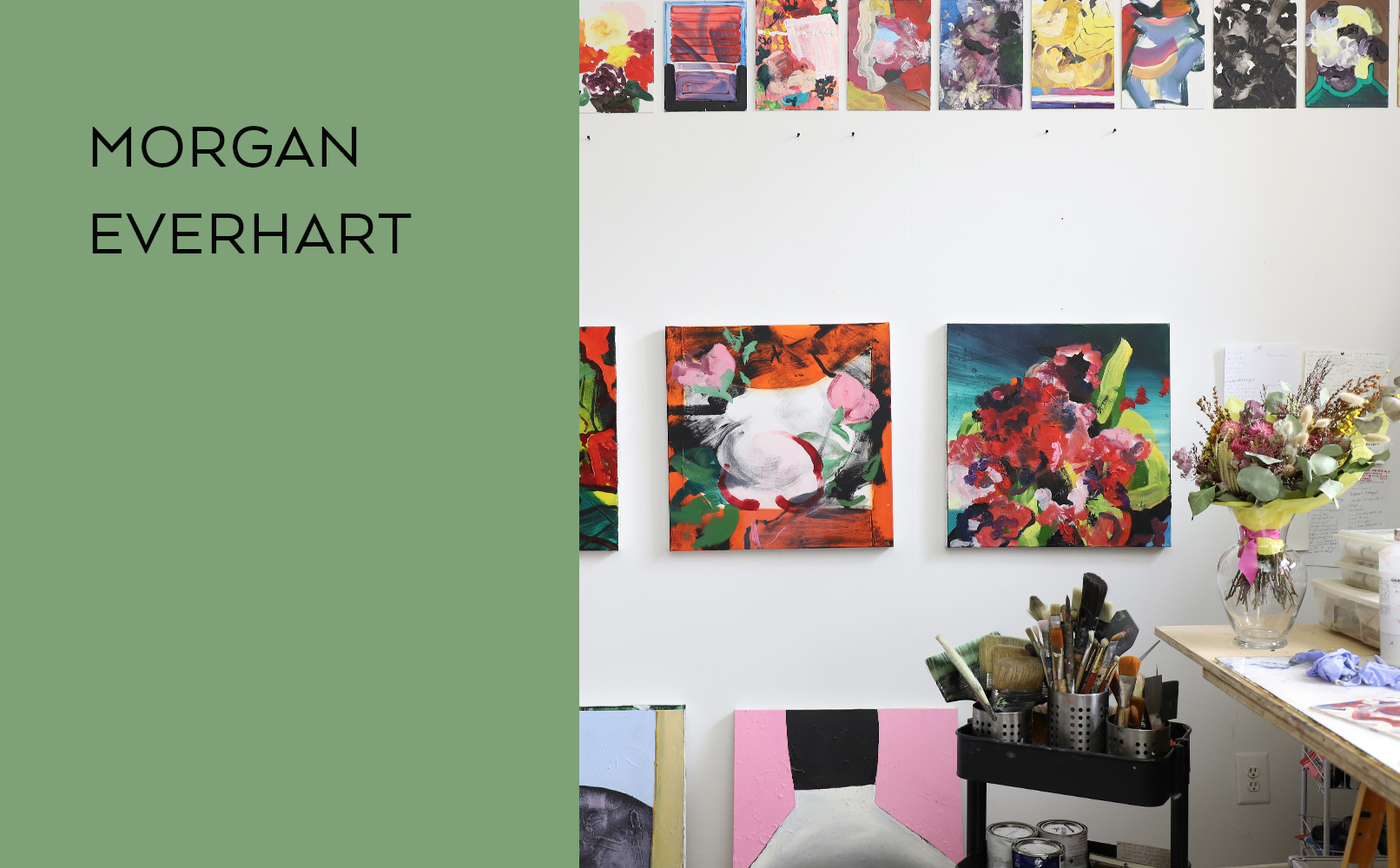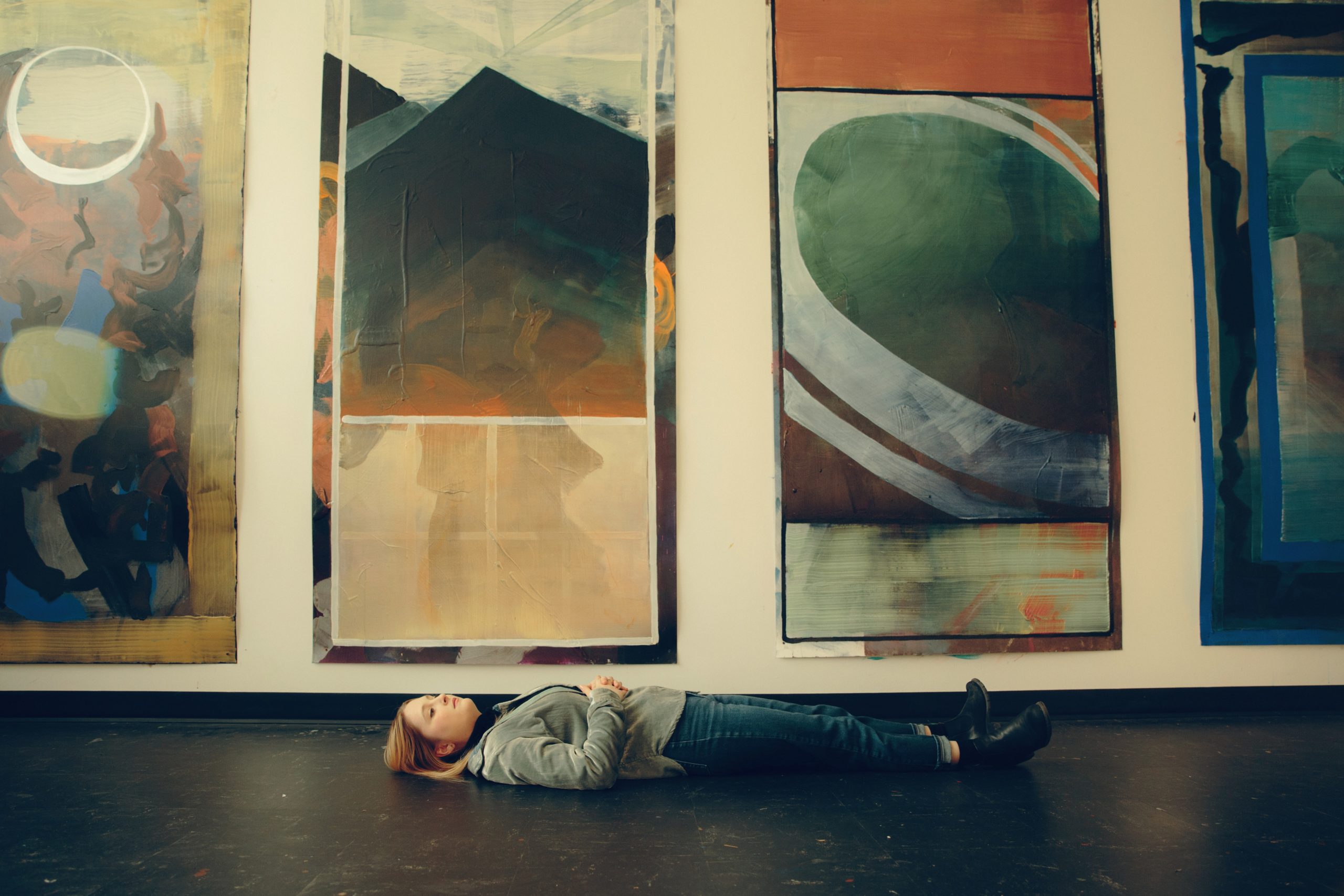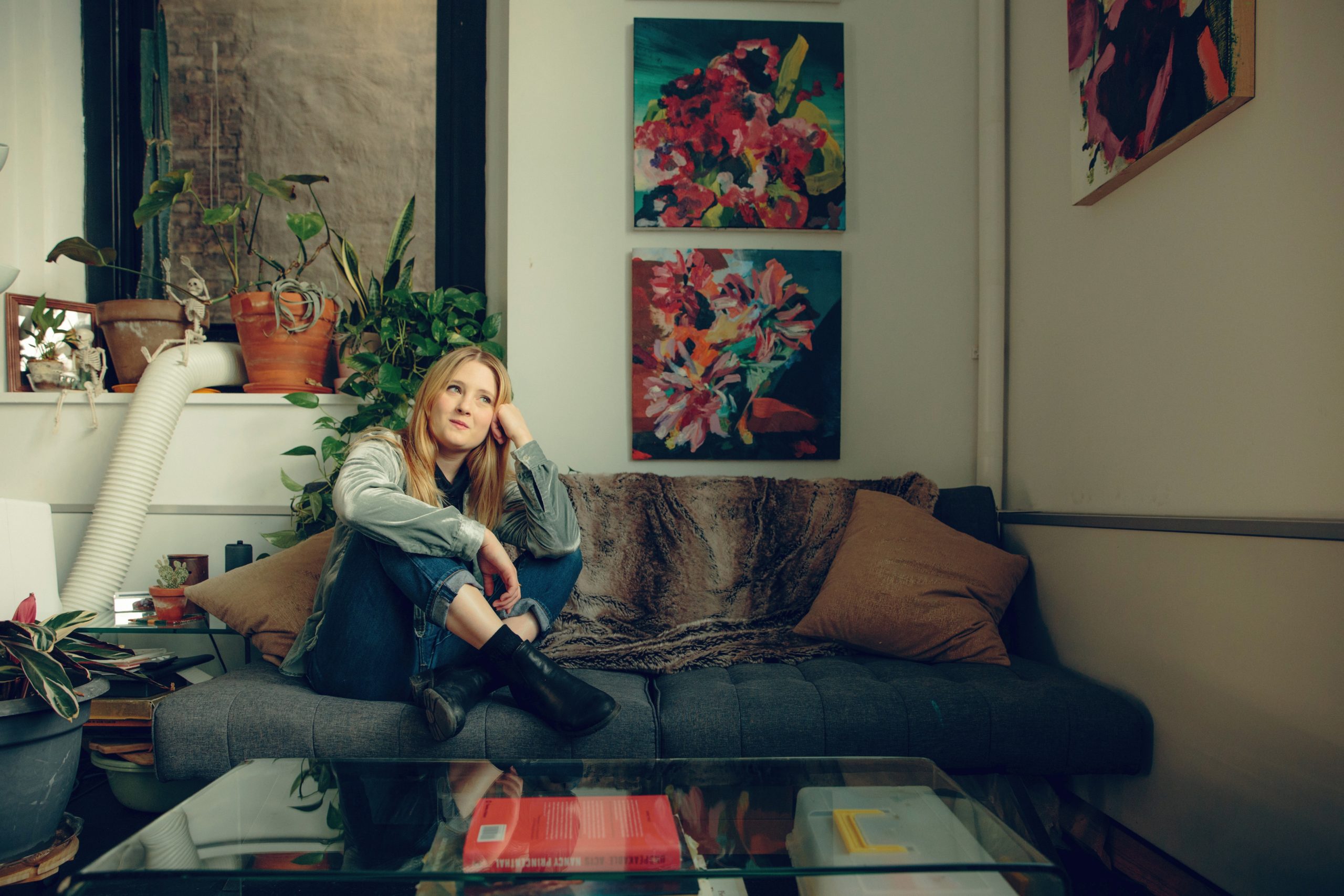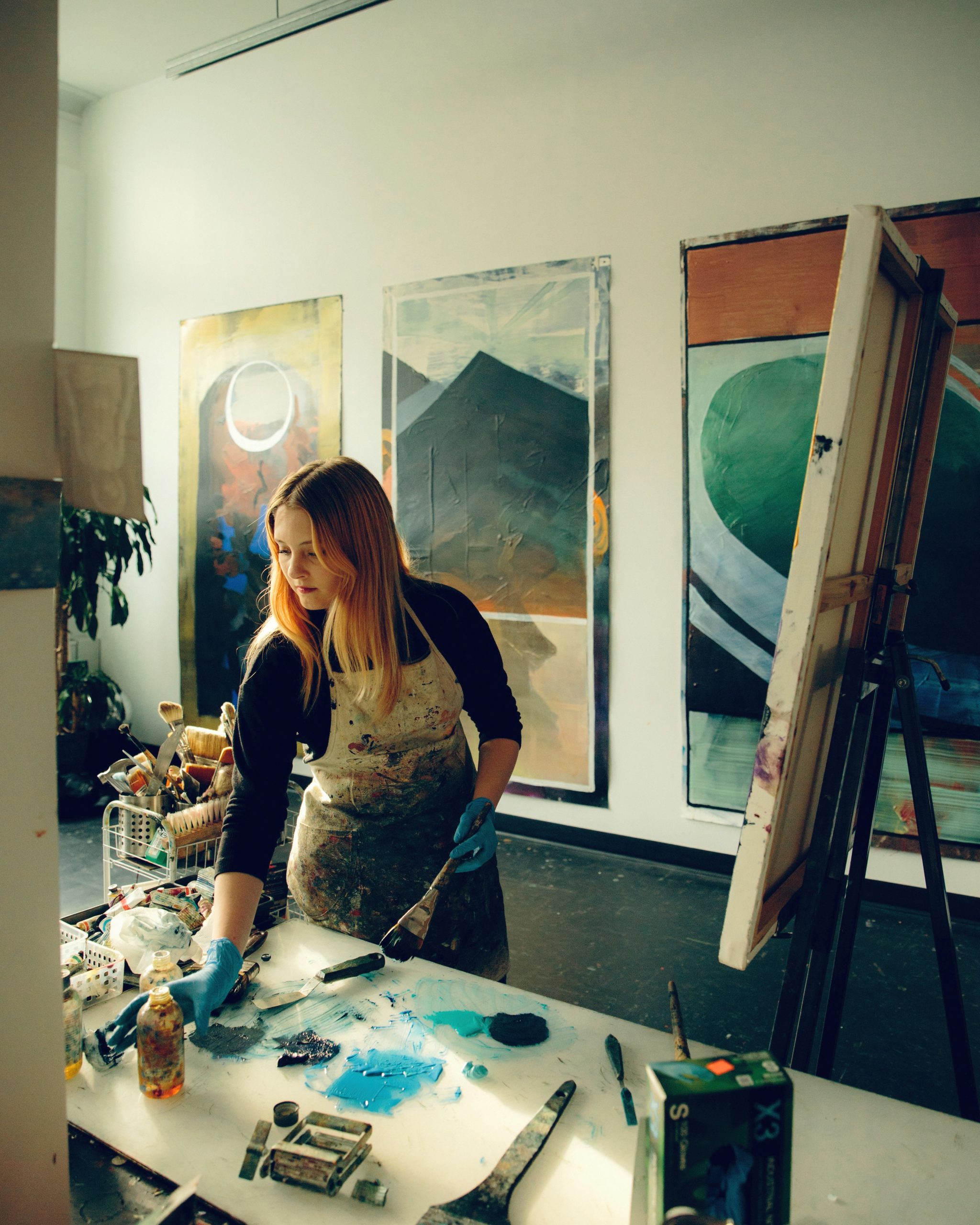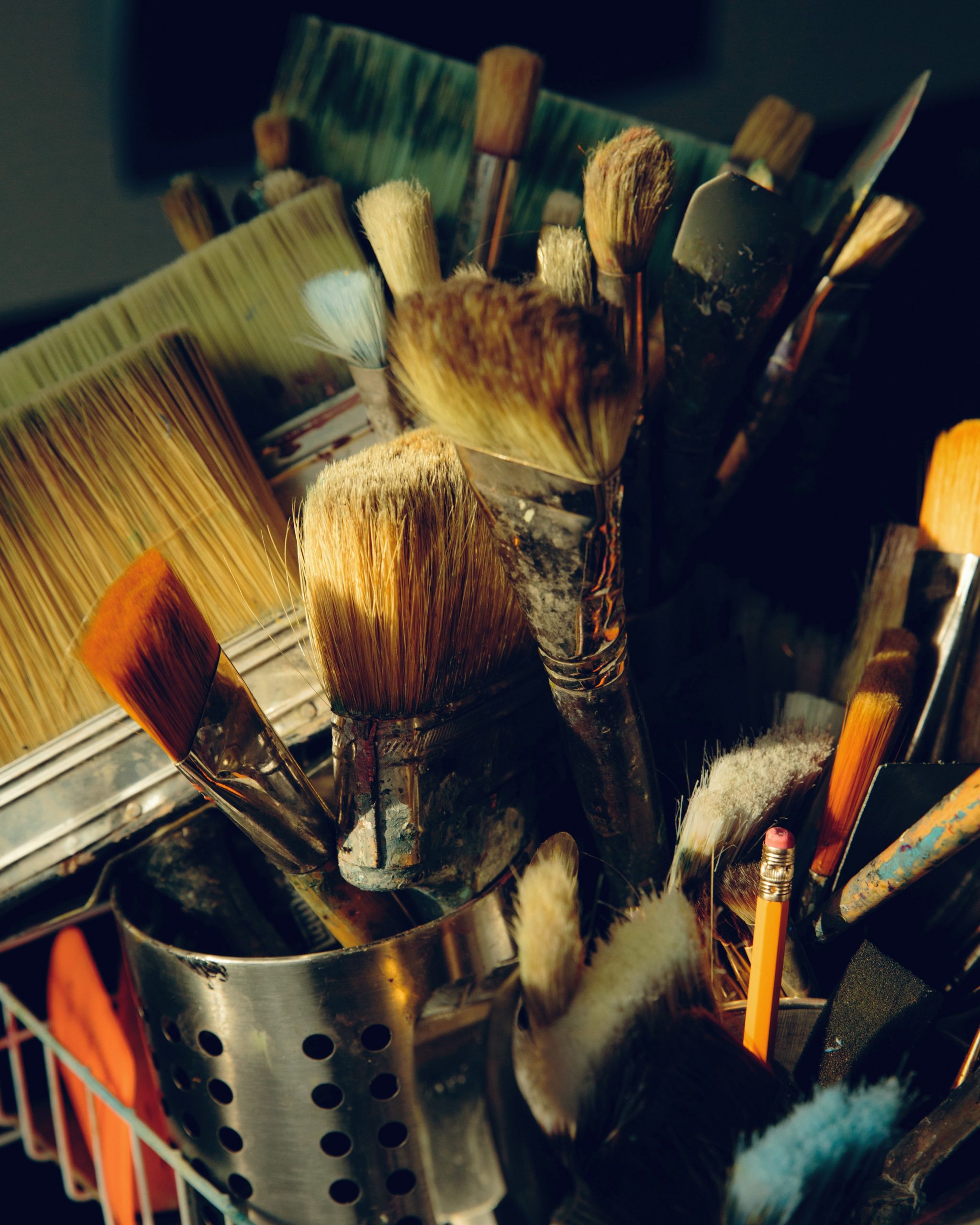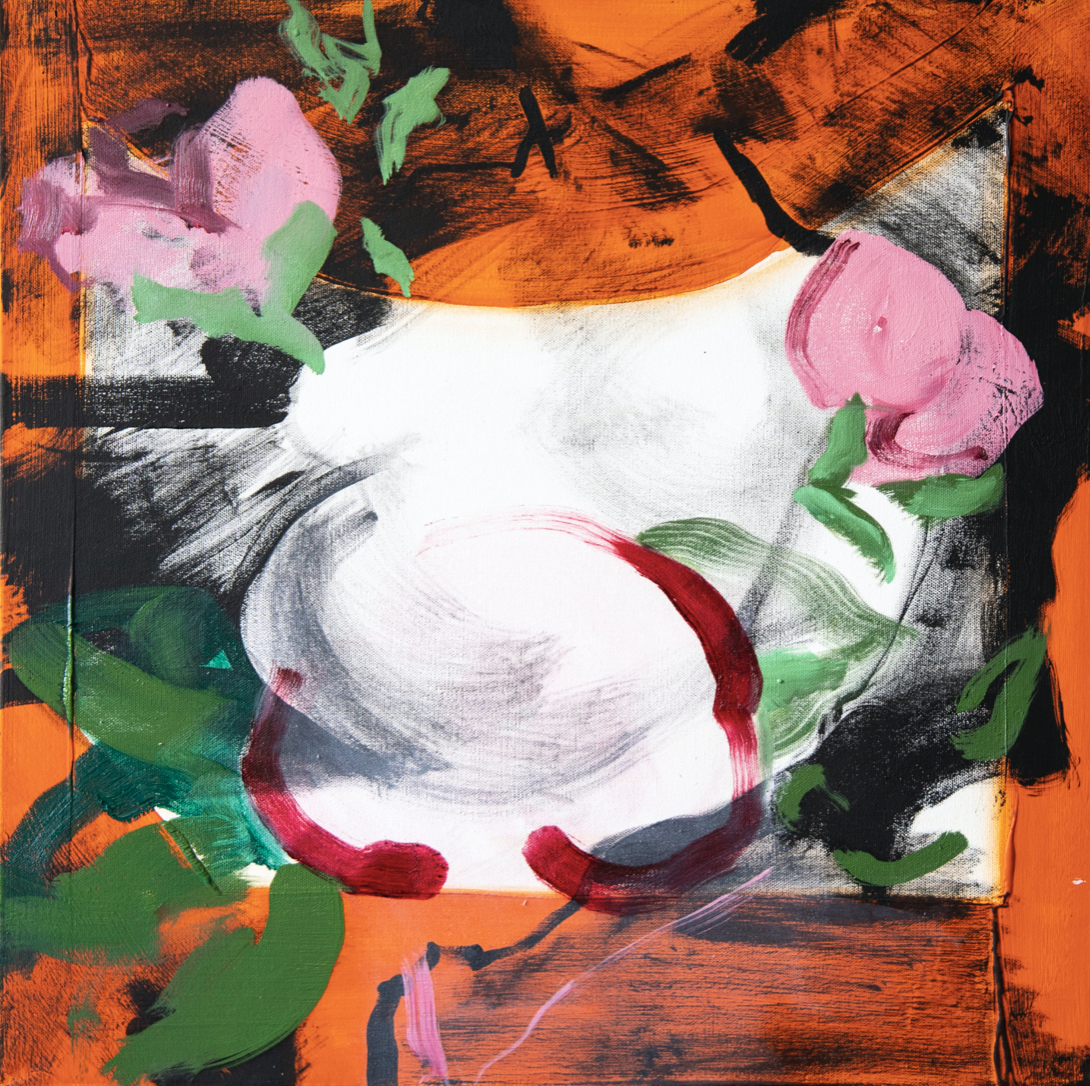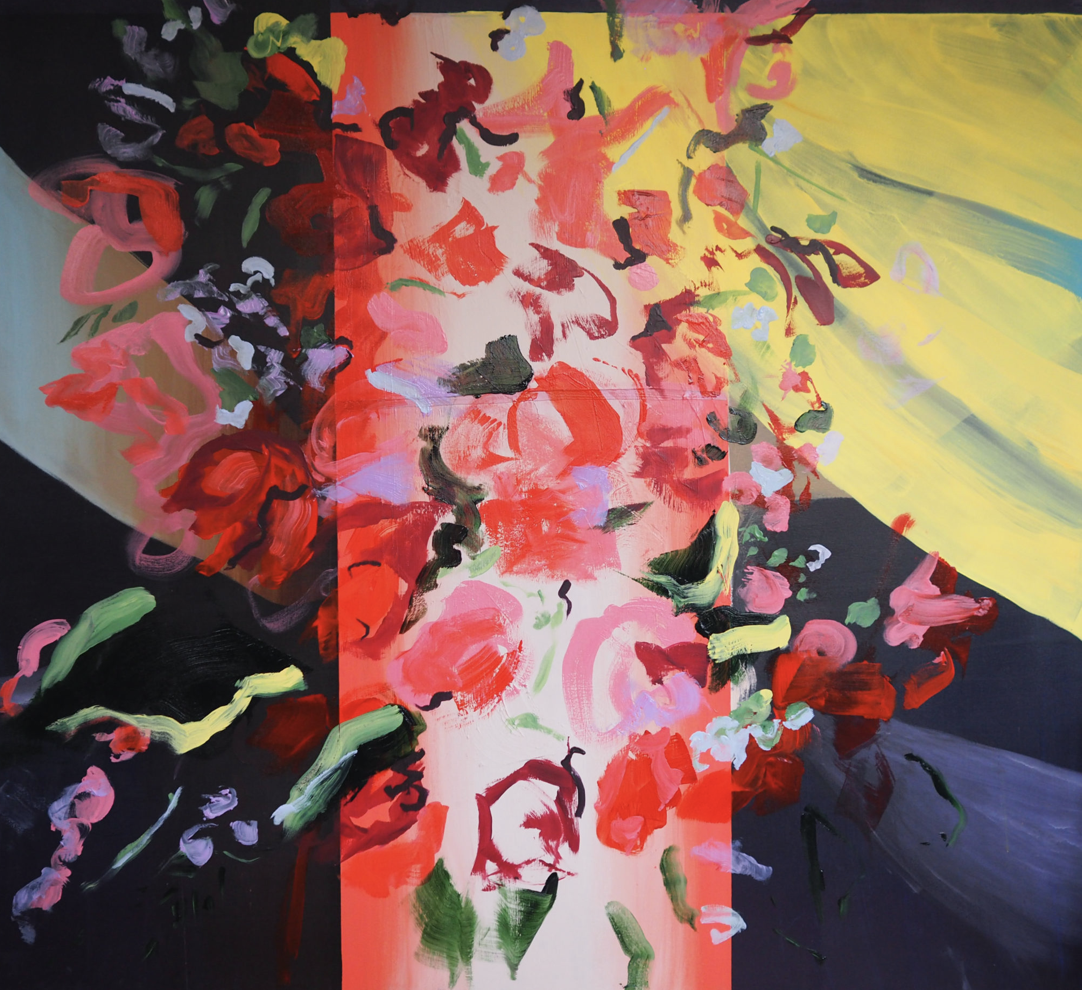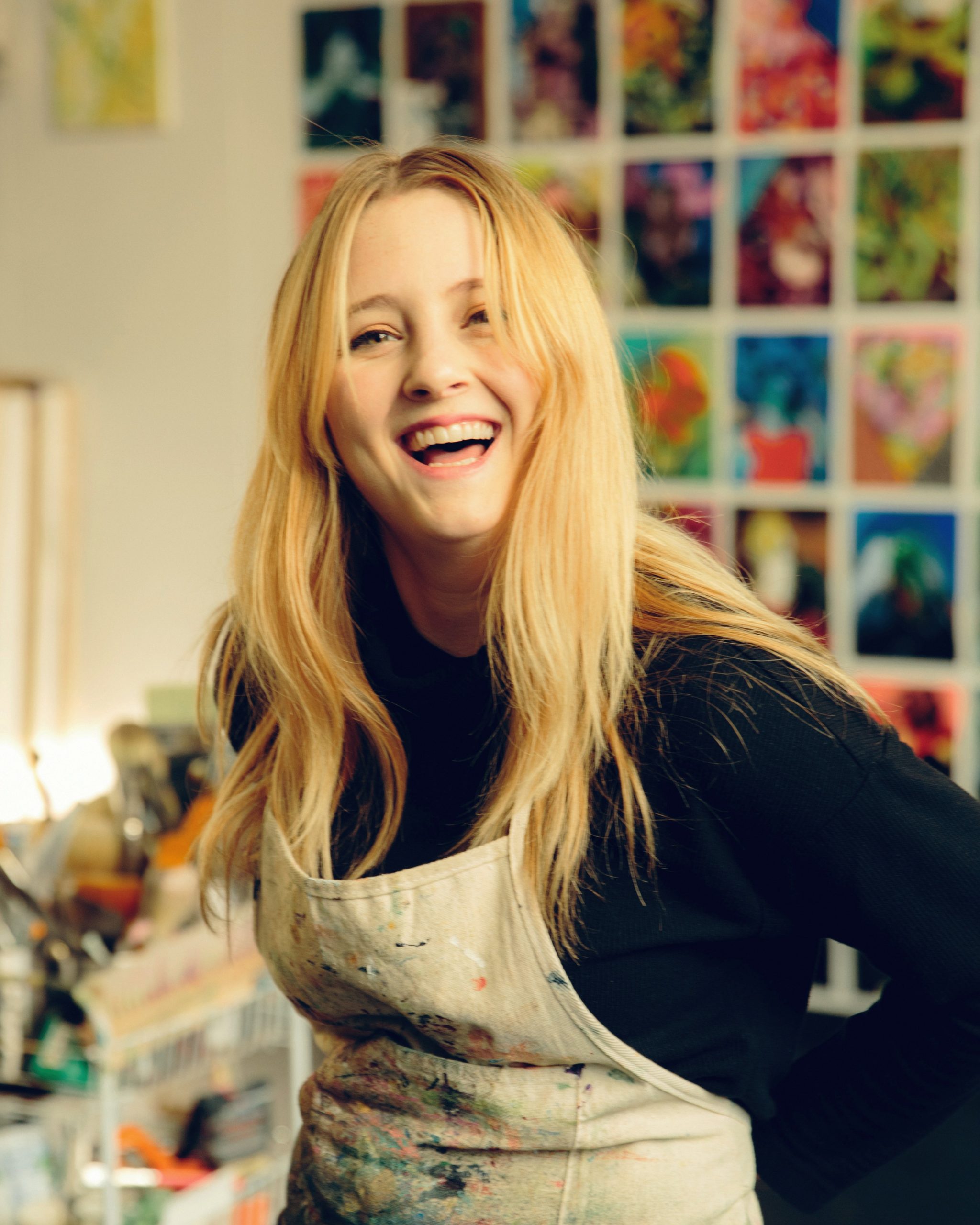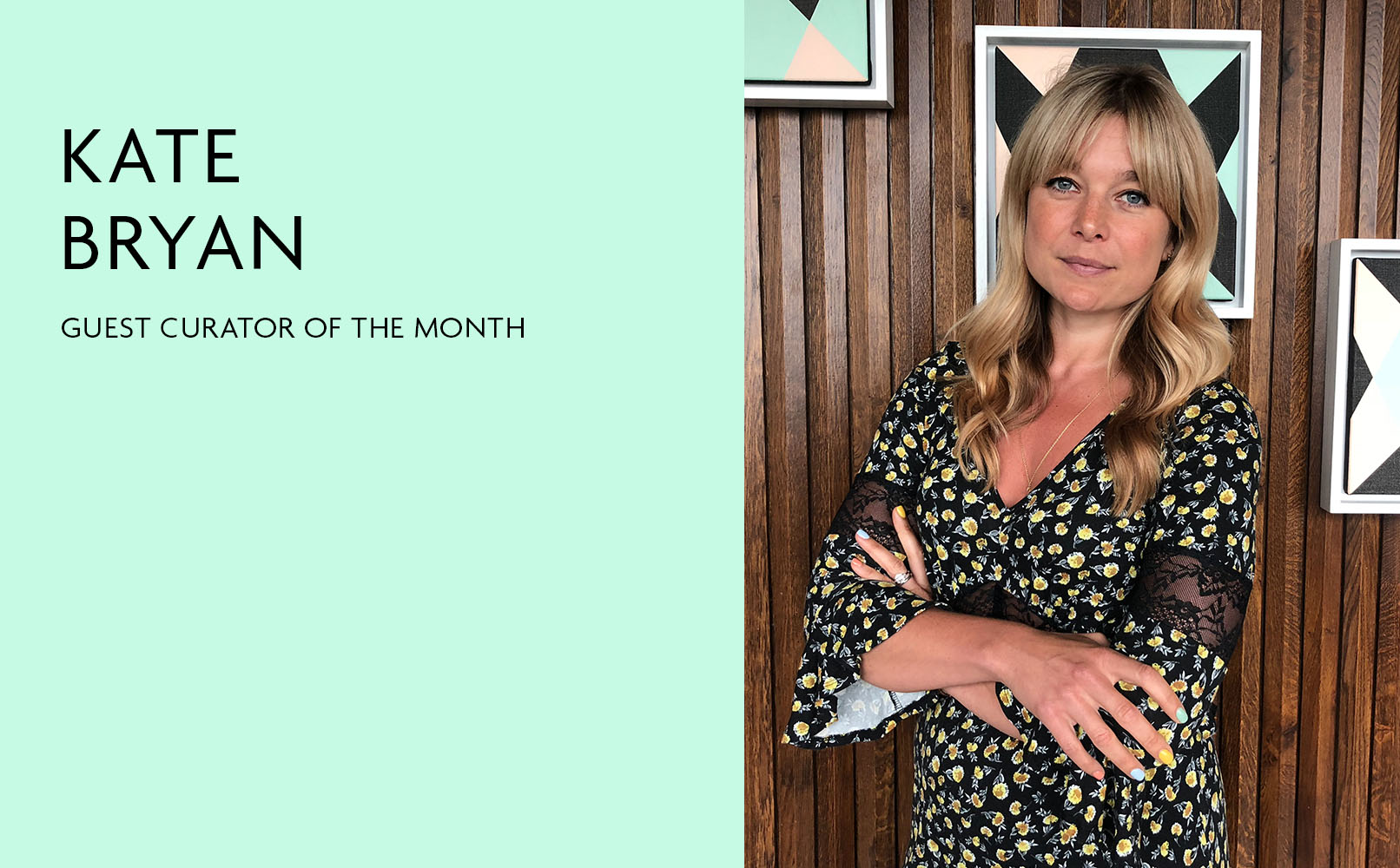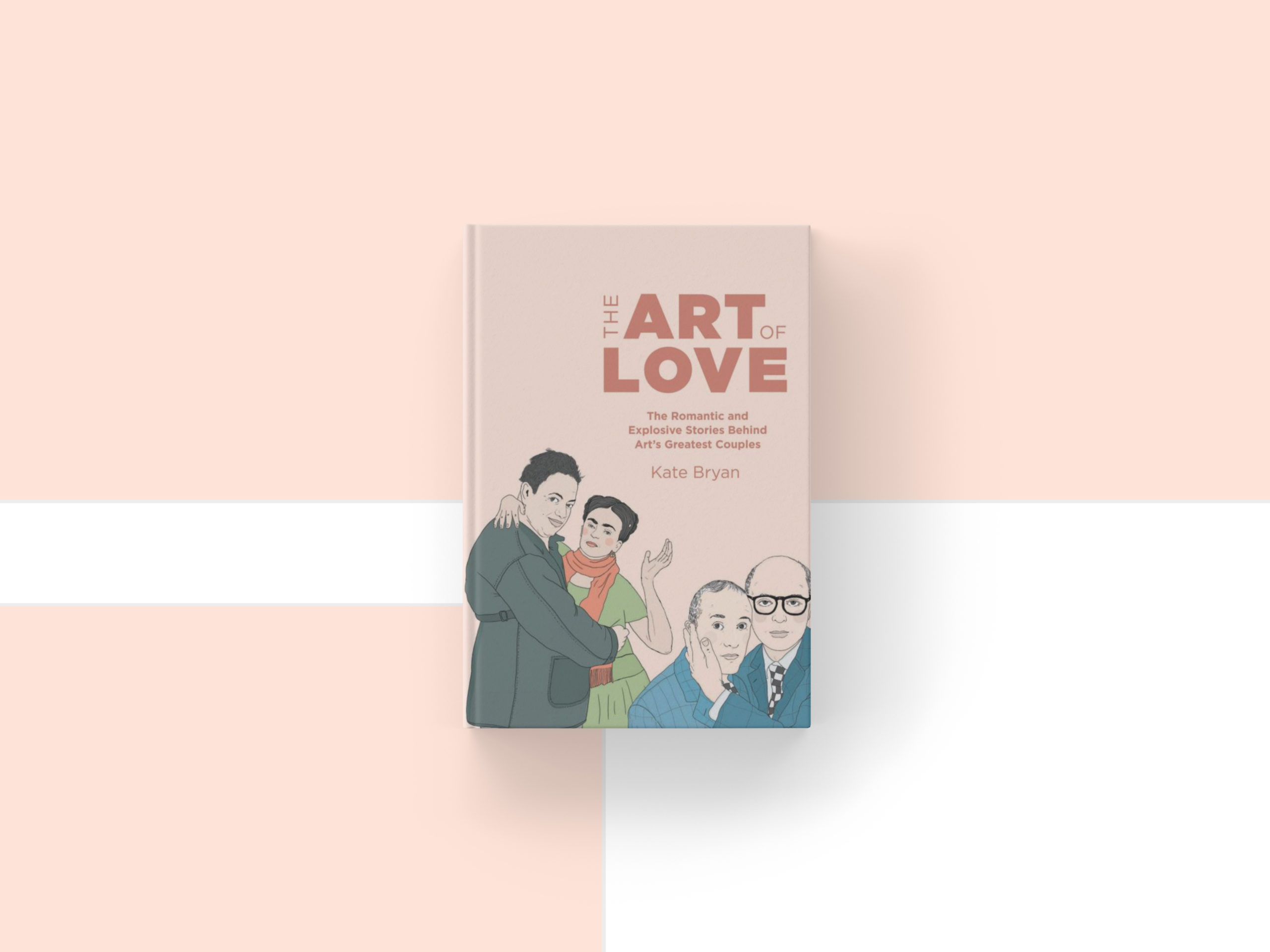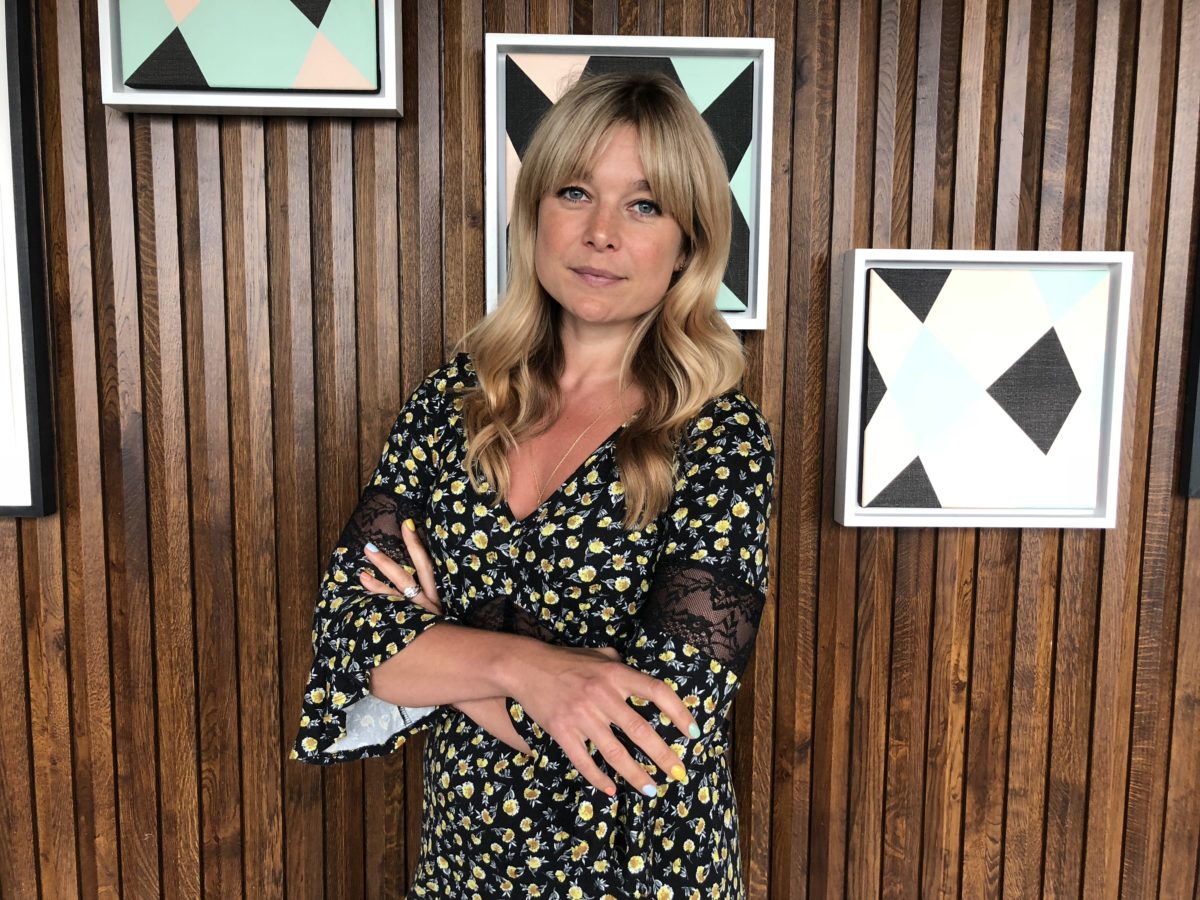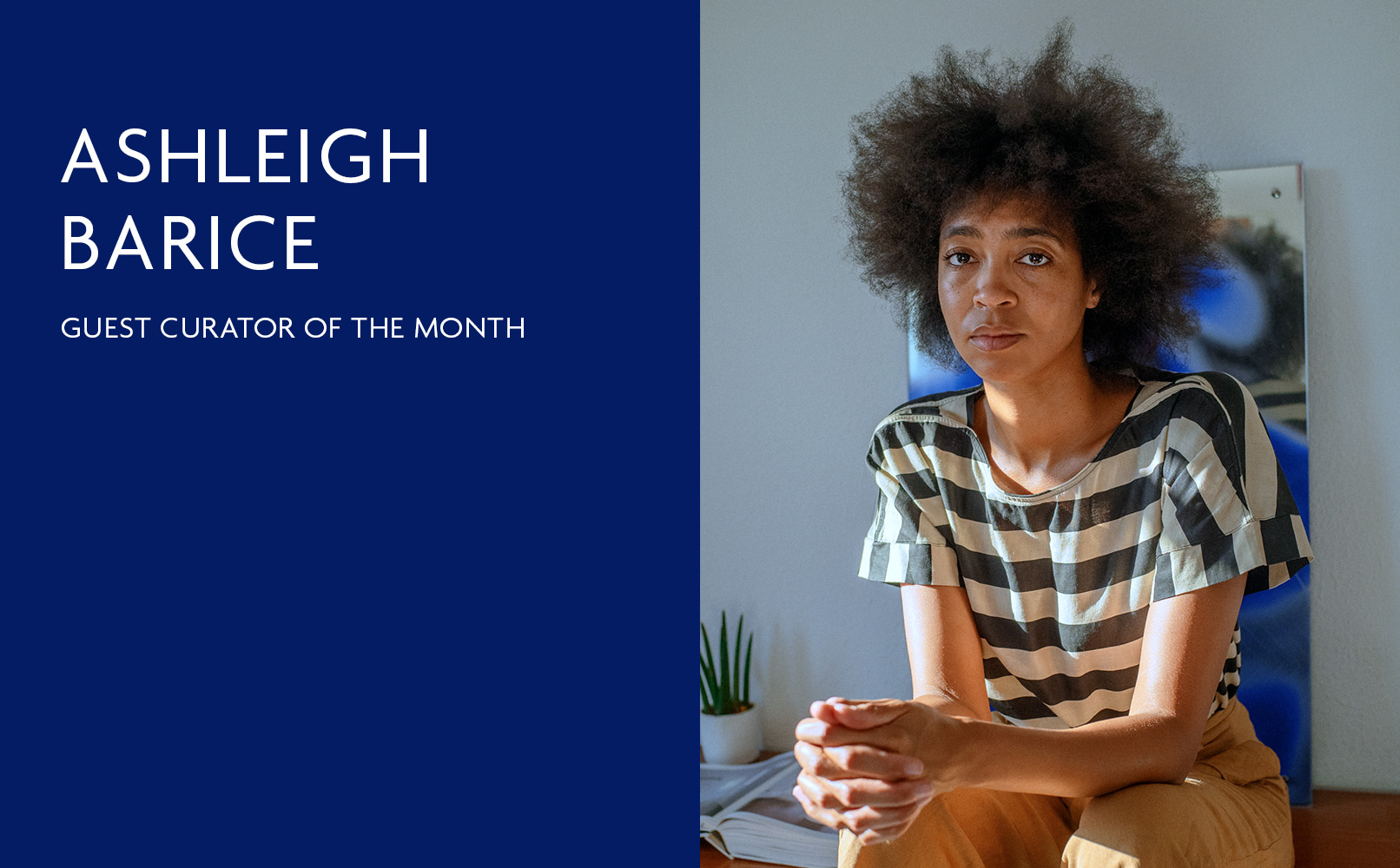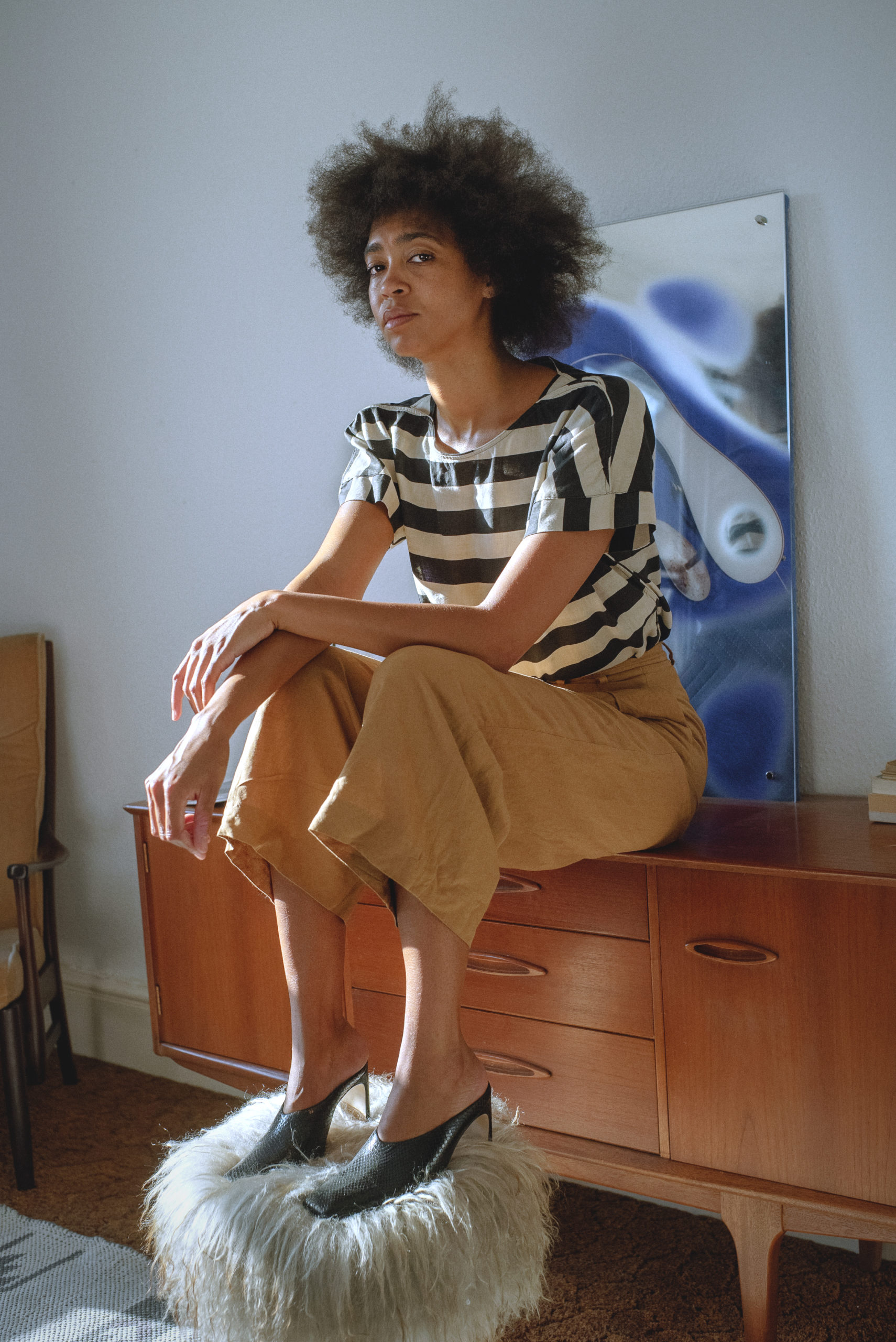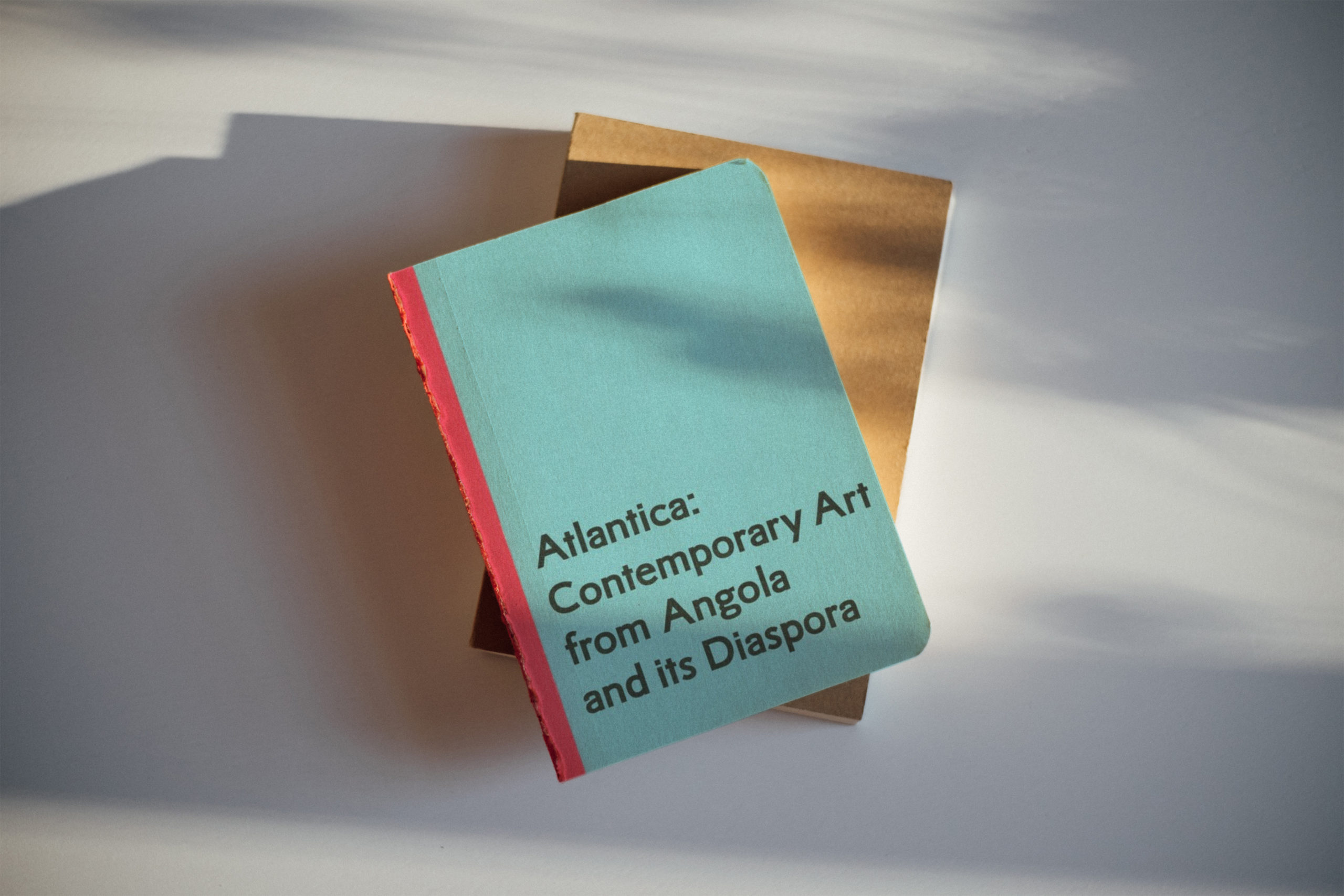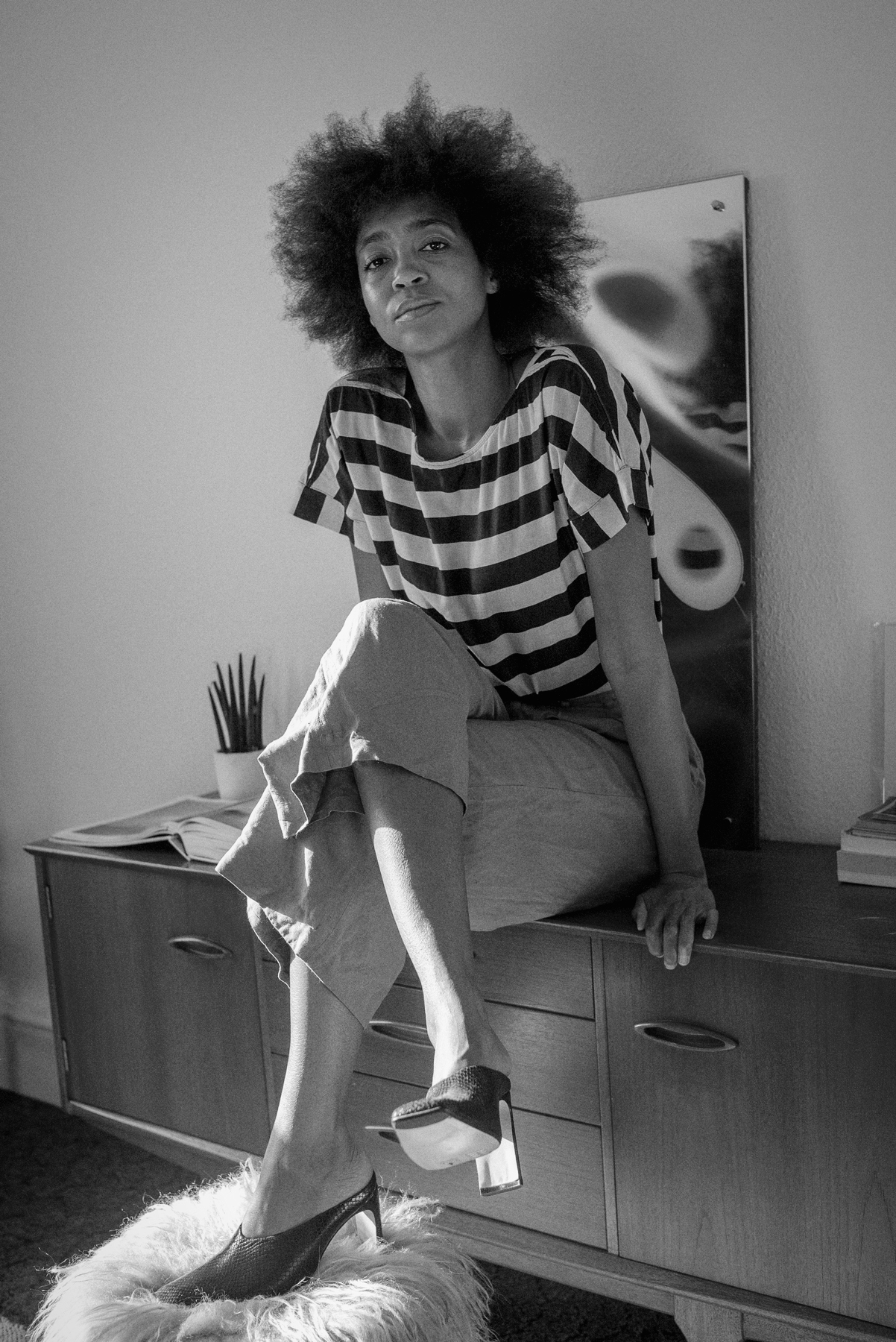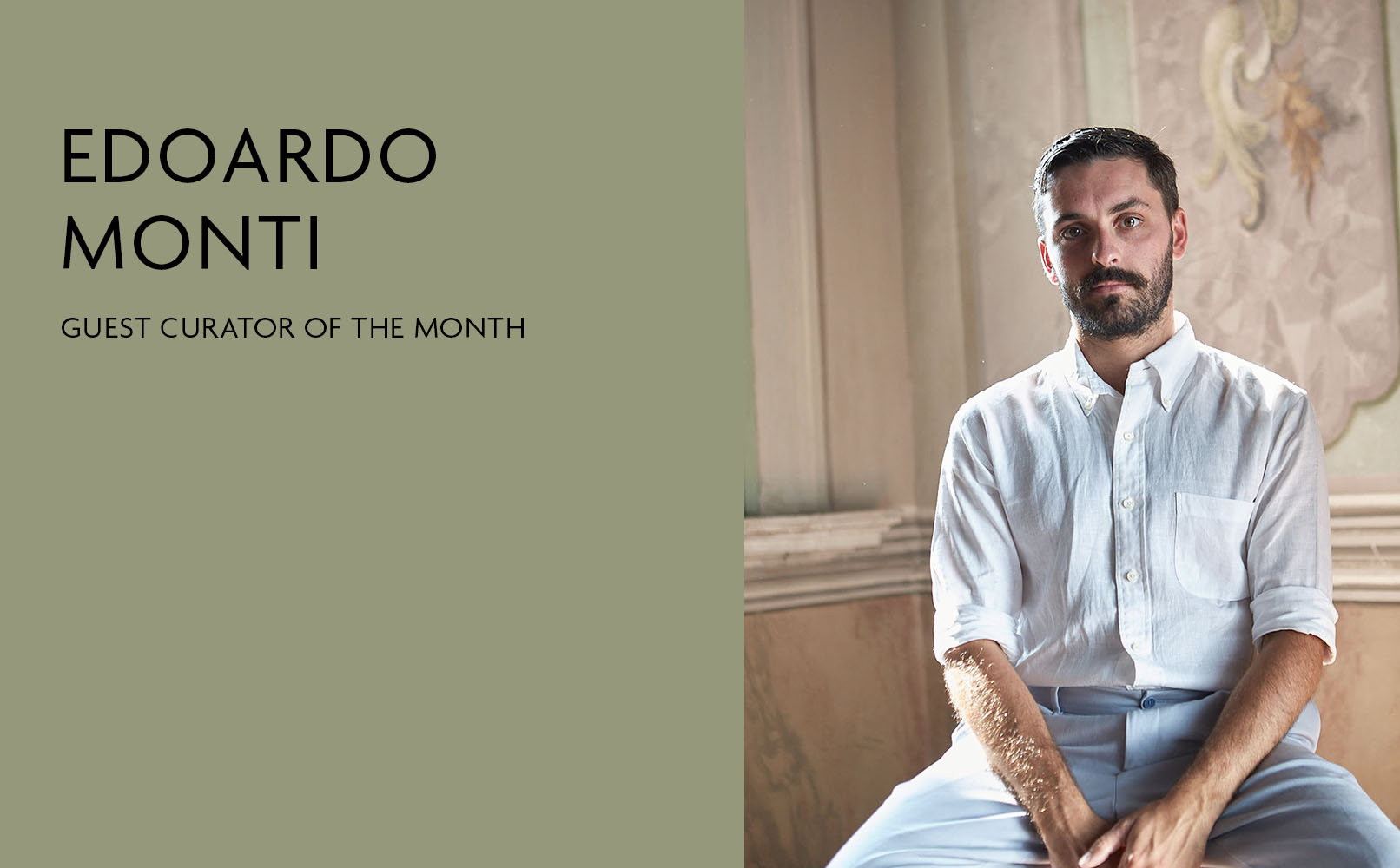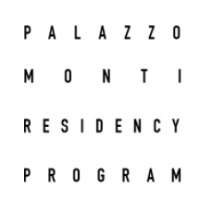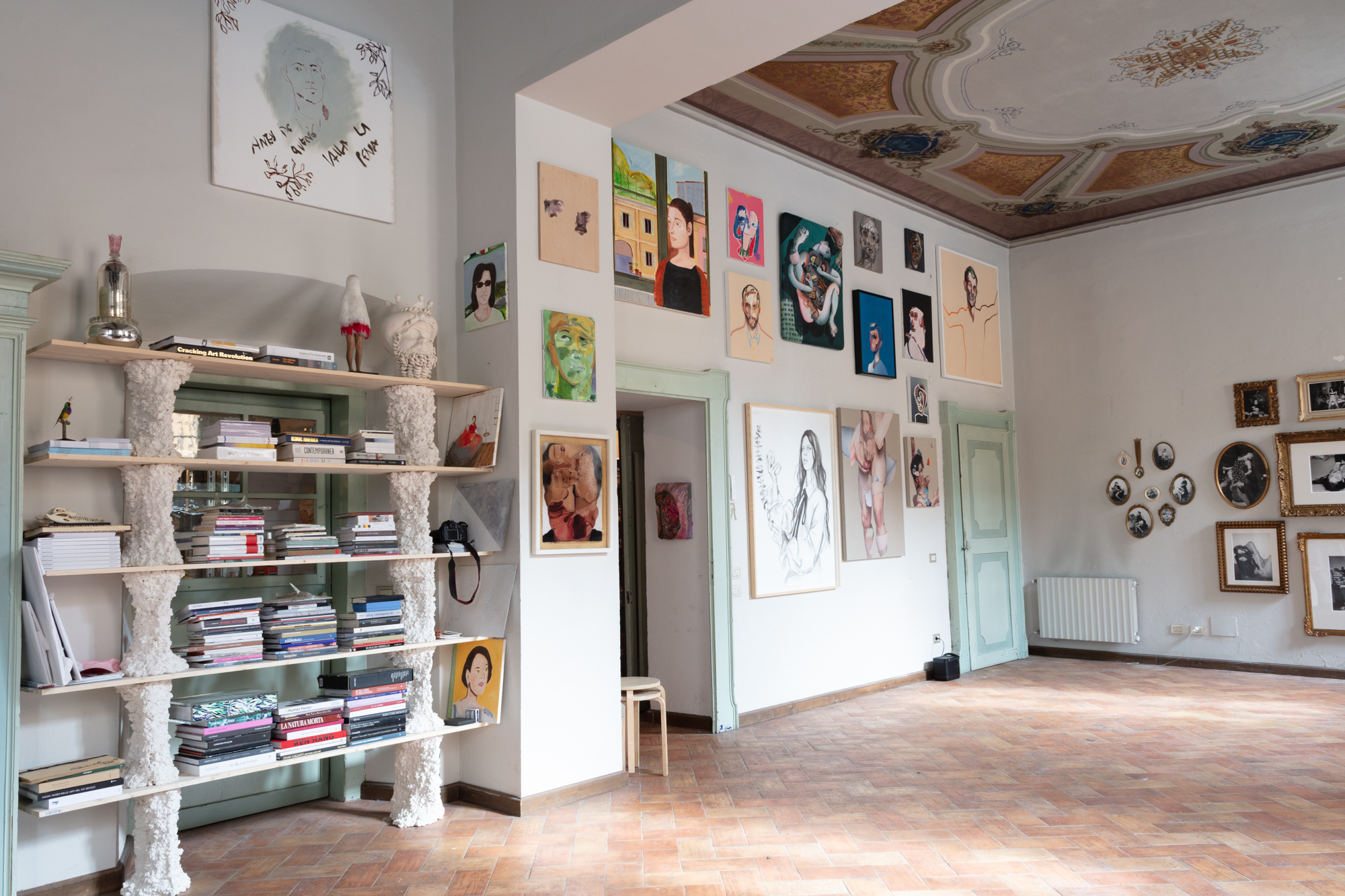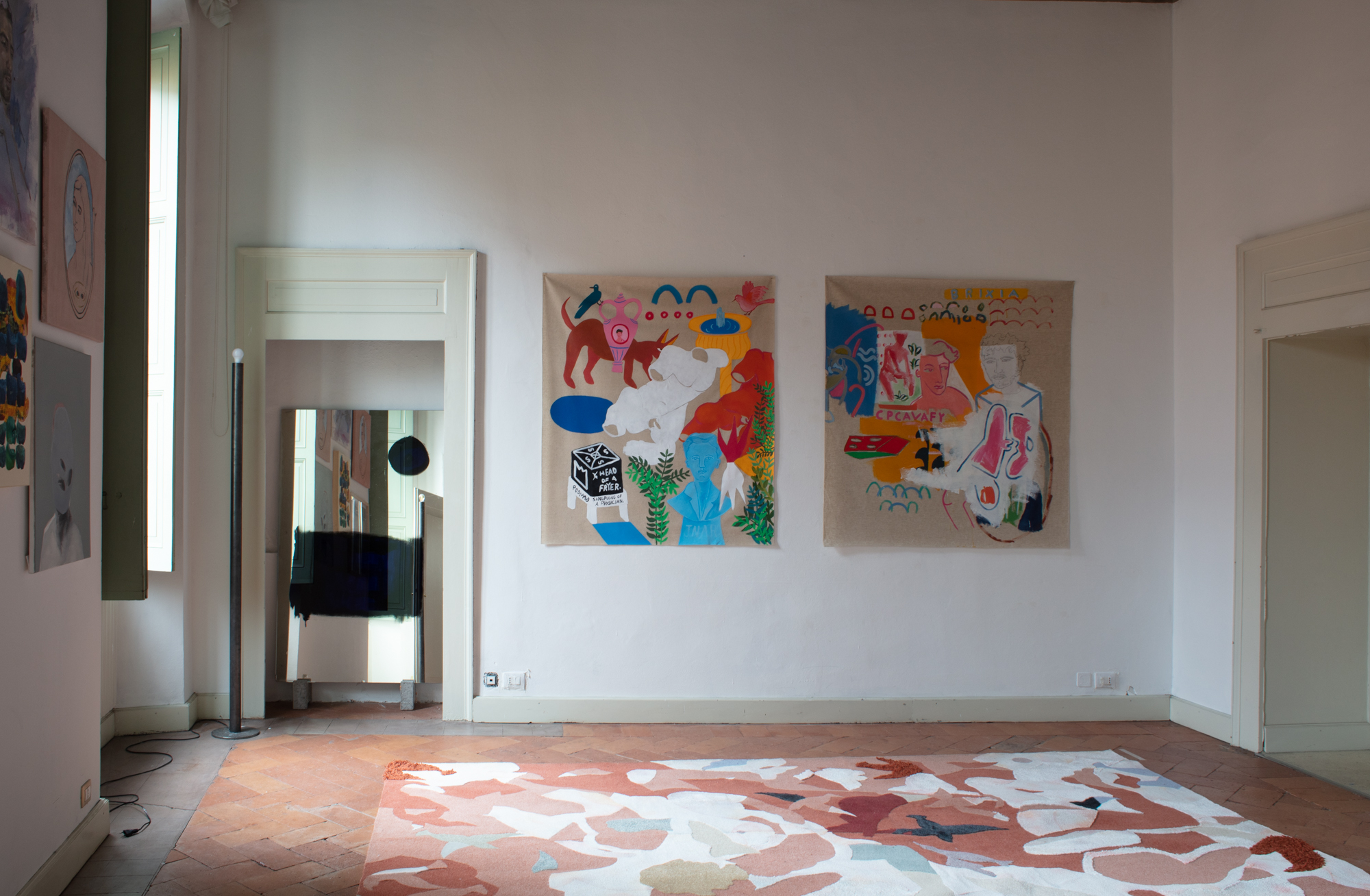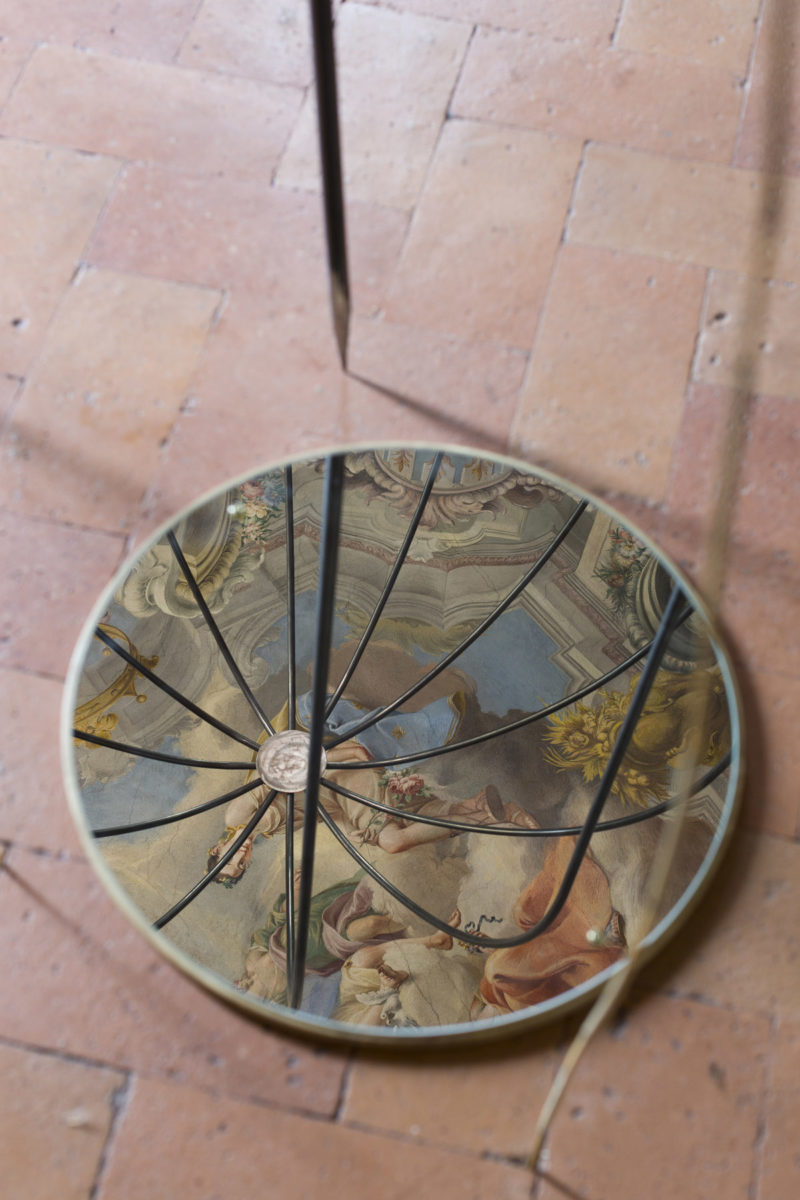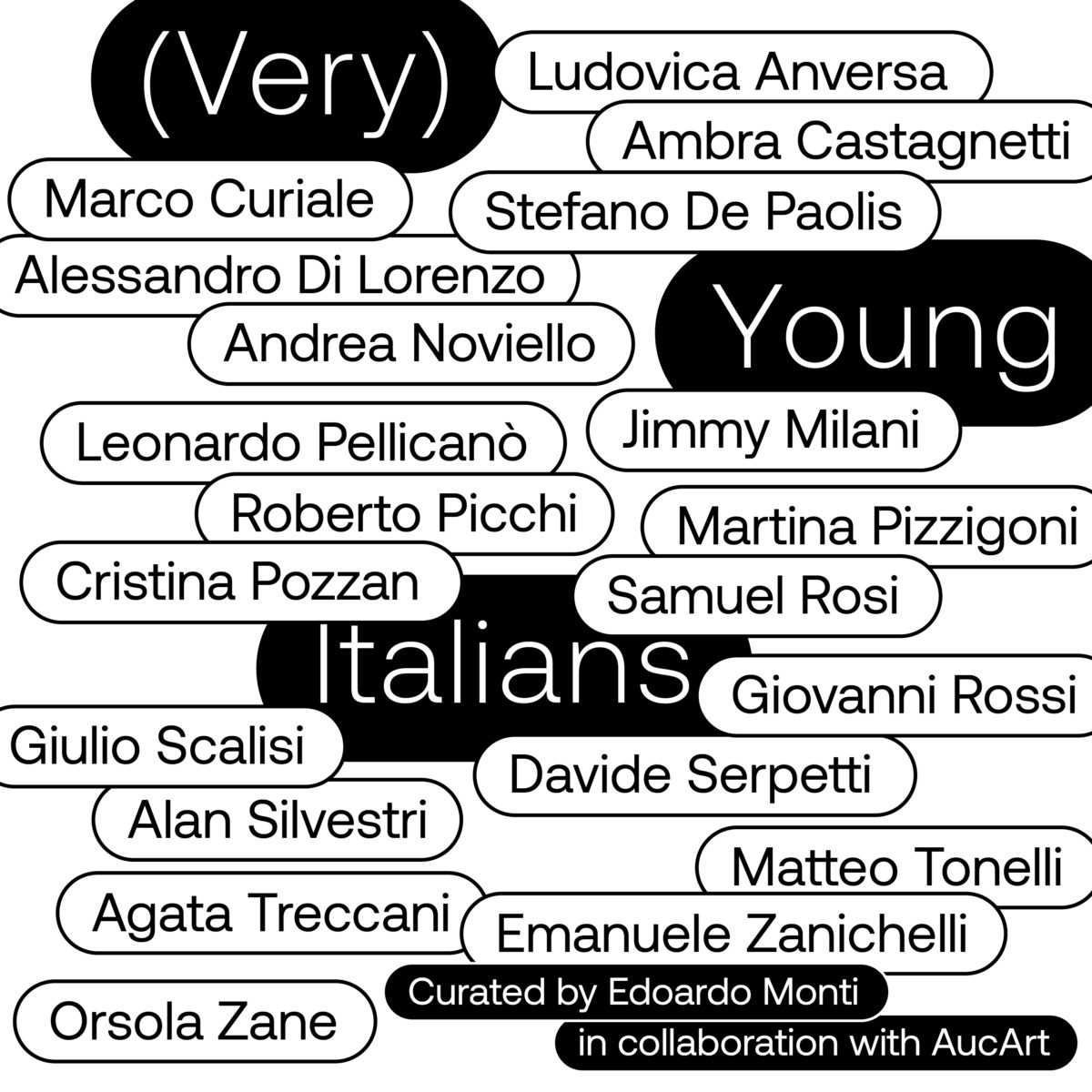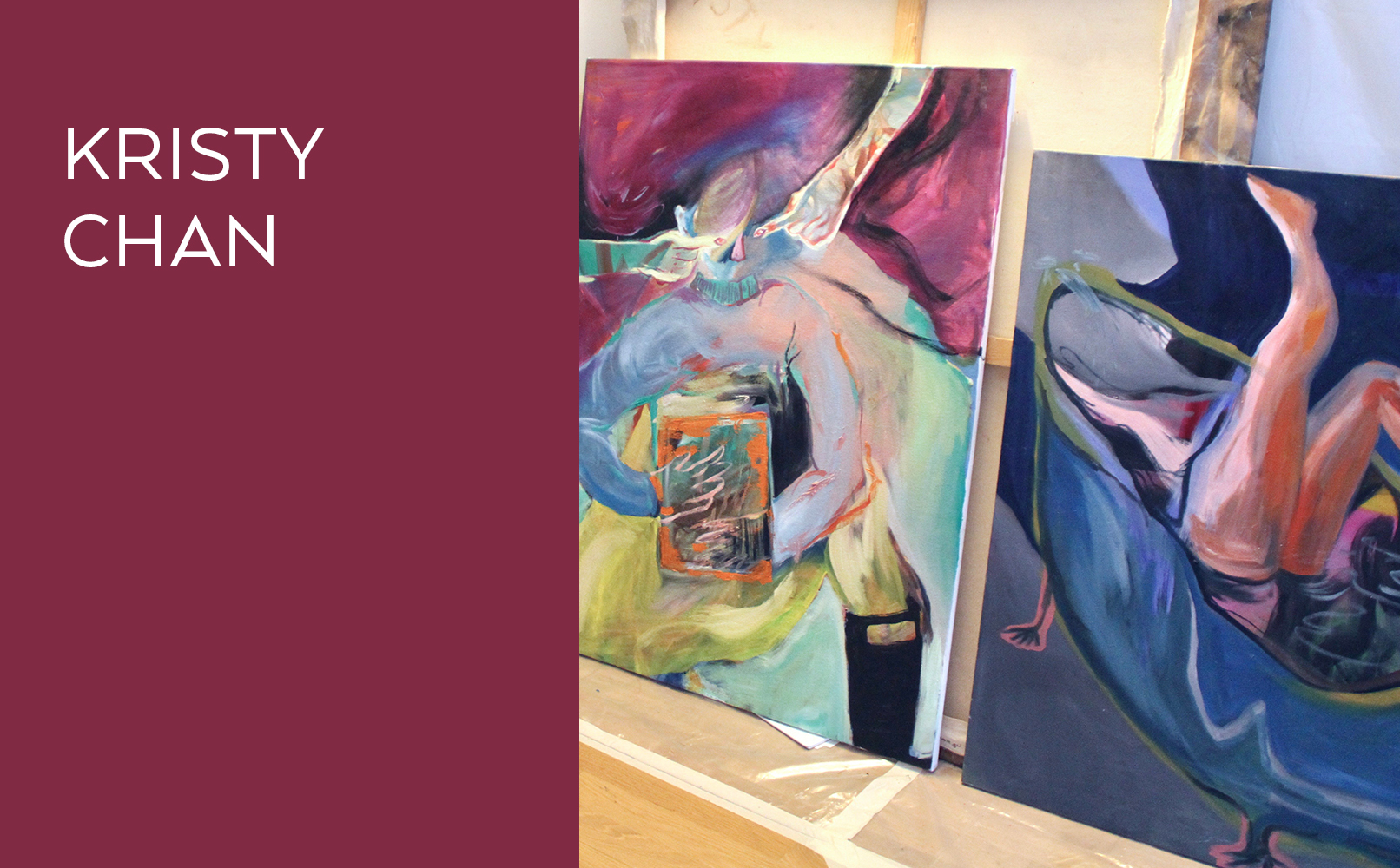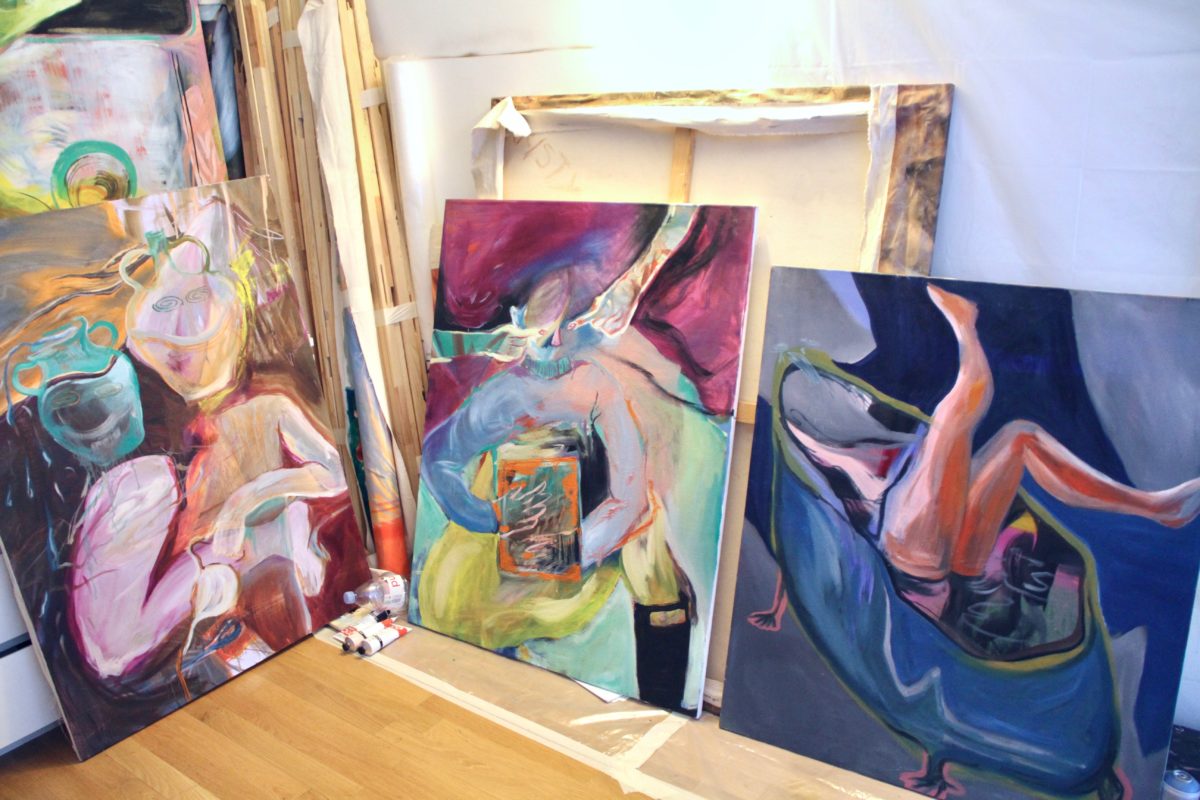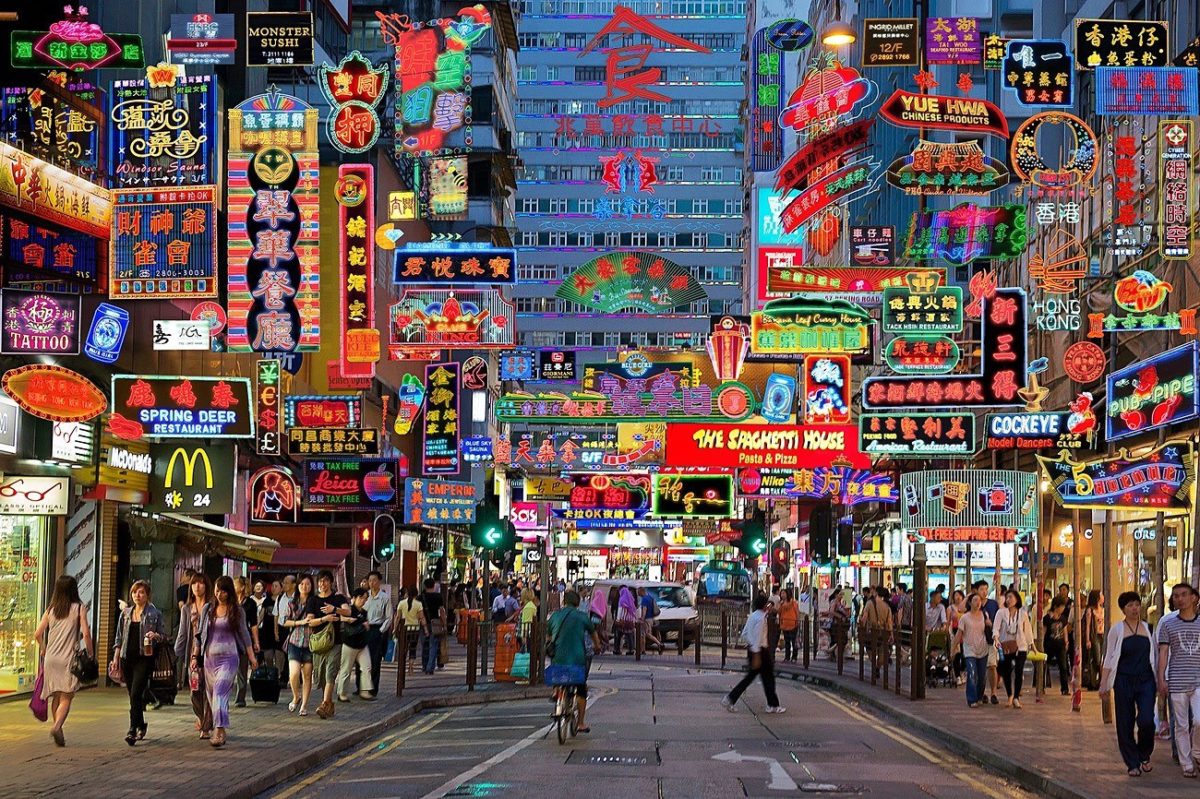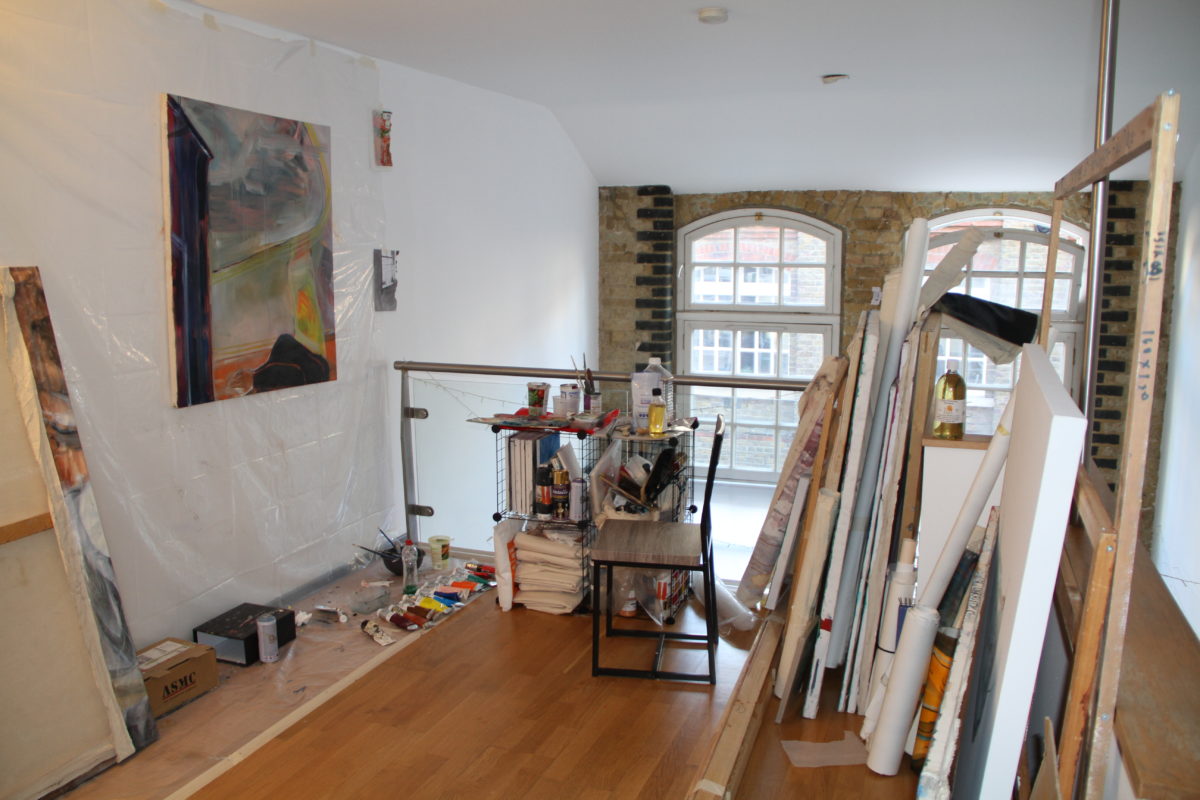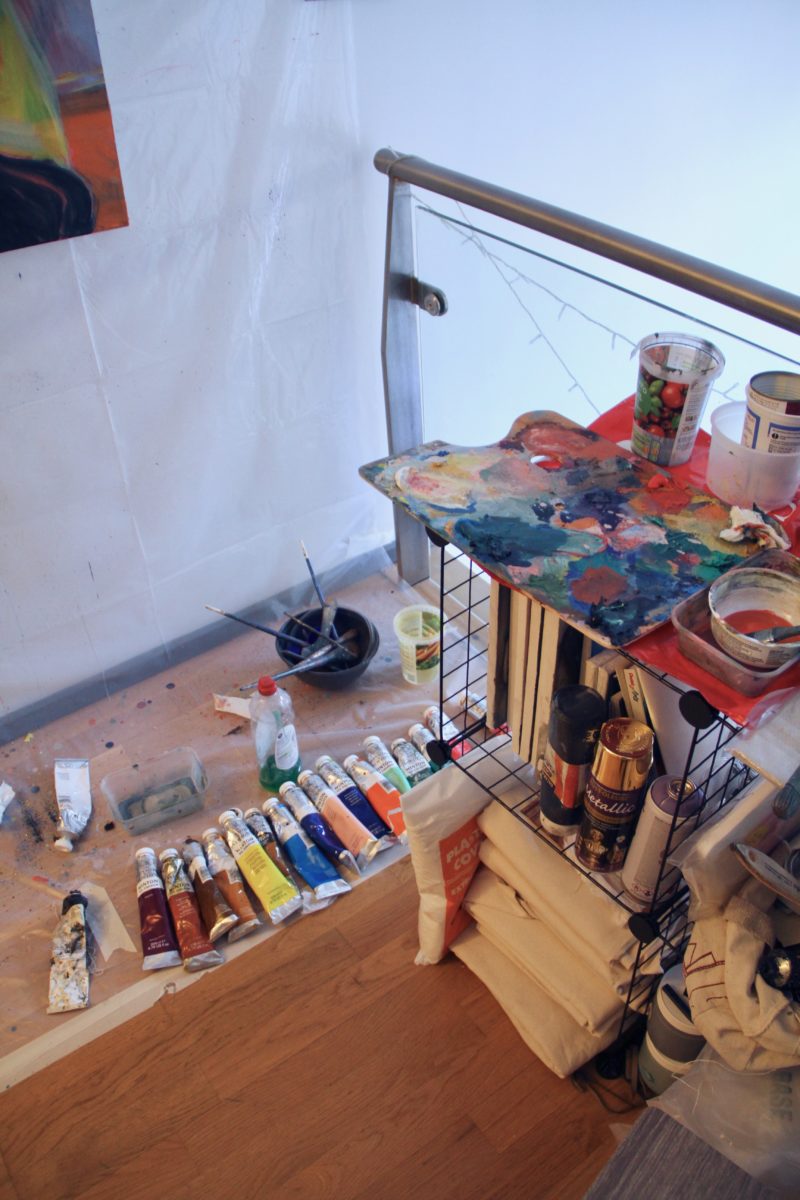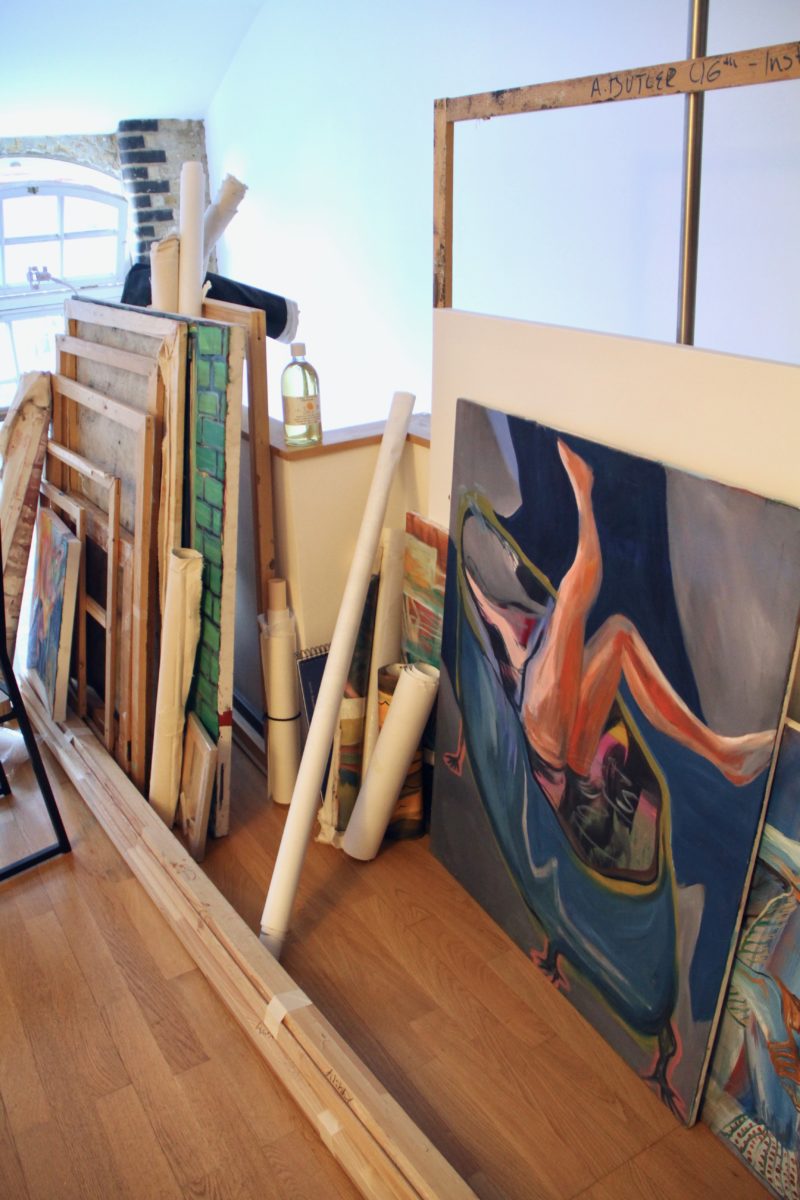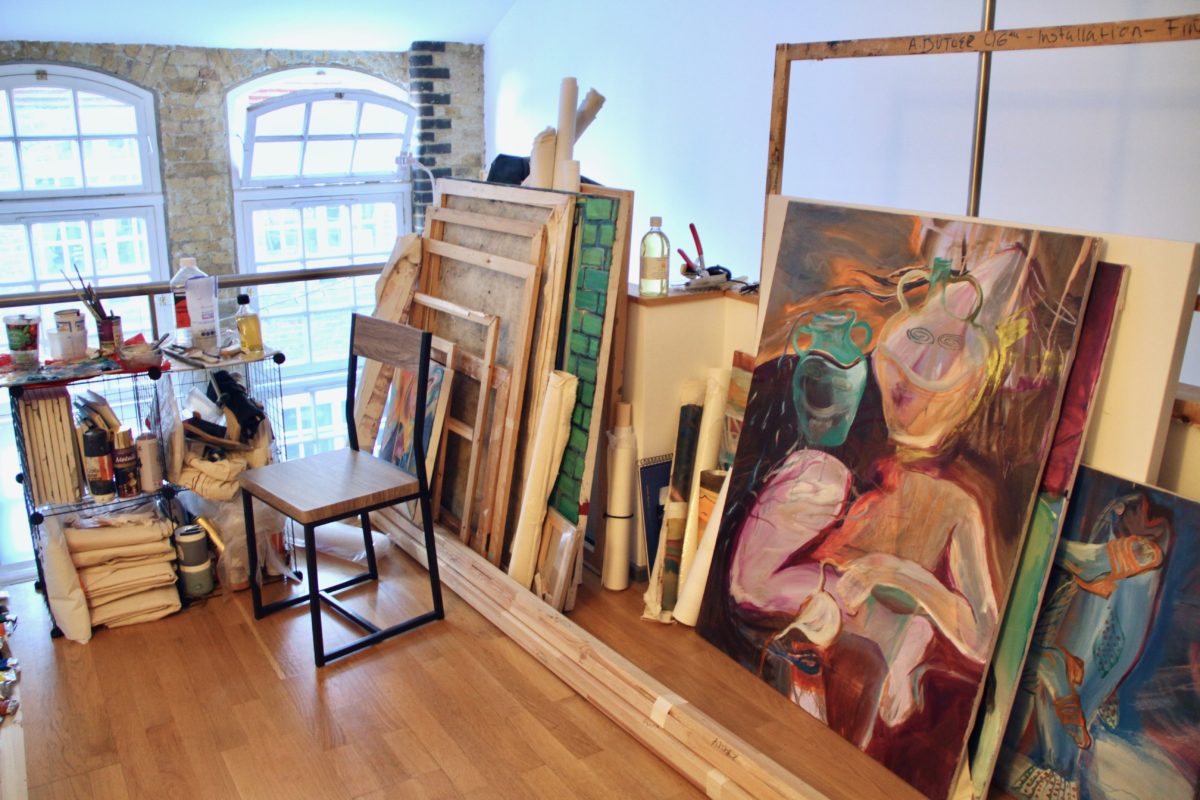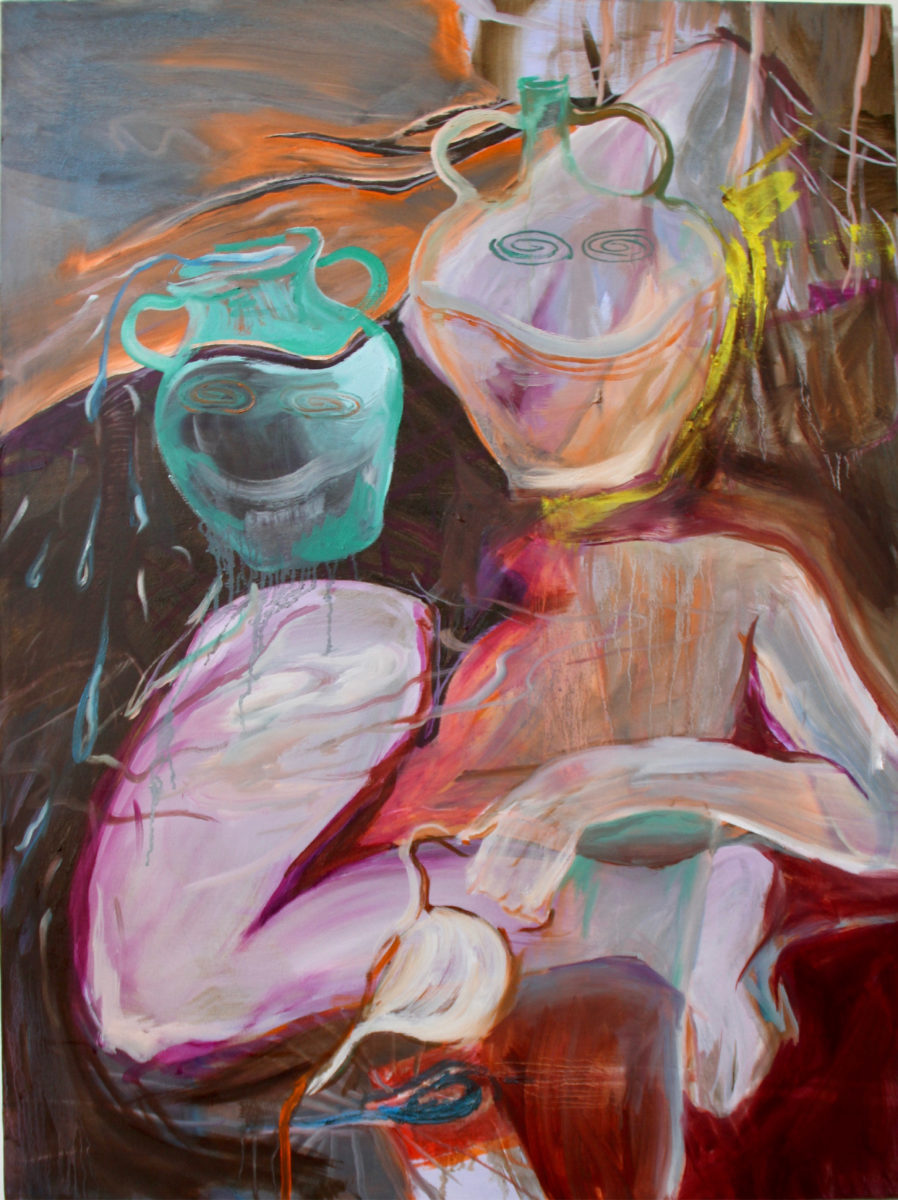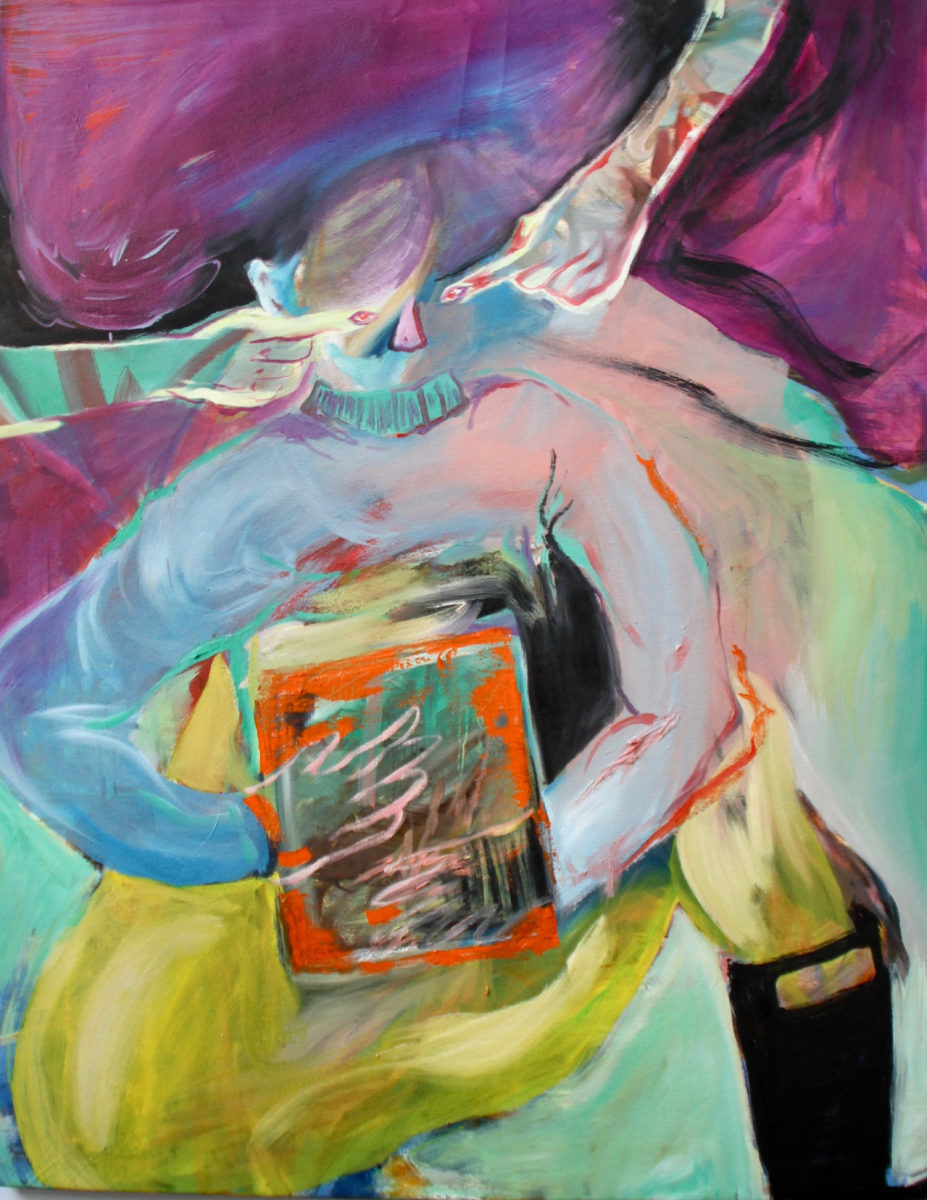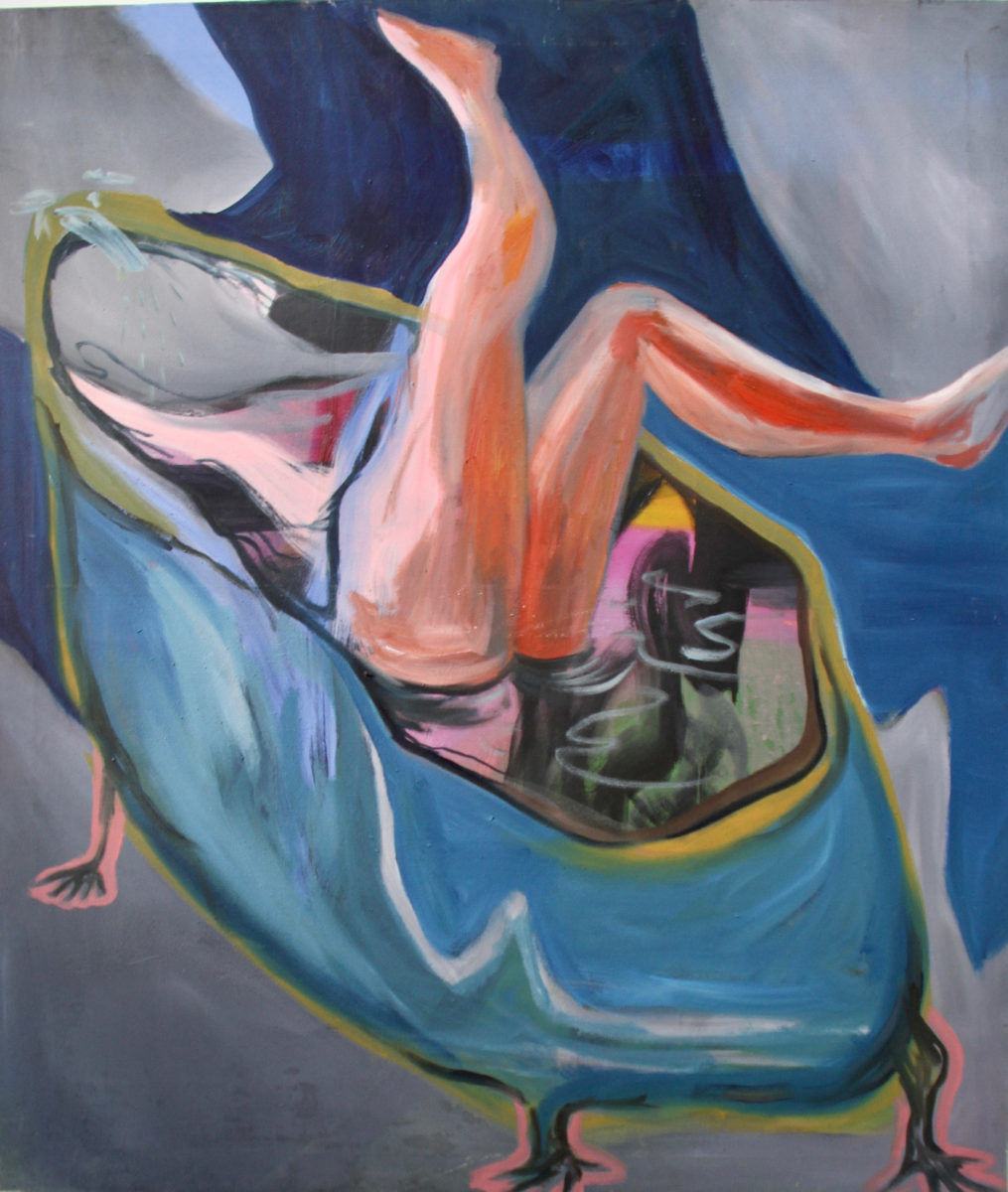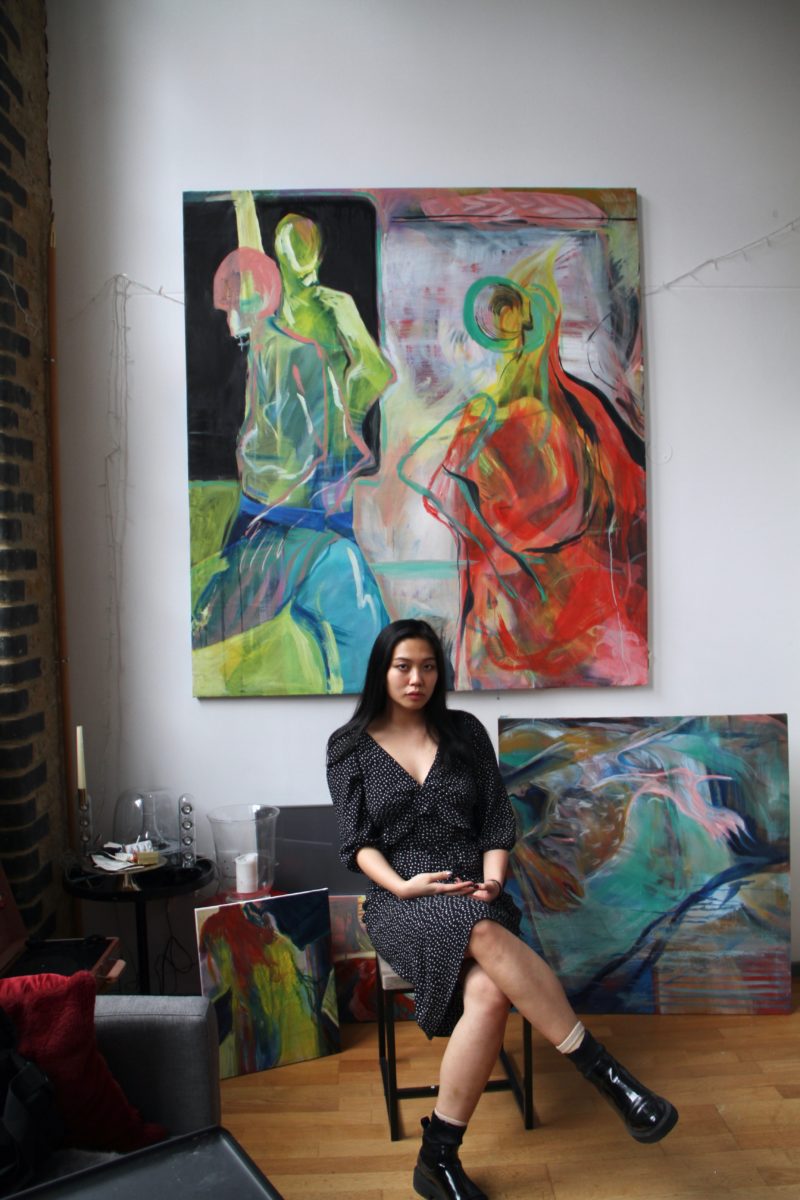In the Studio with Atillio Esposito
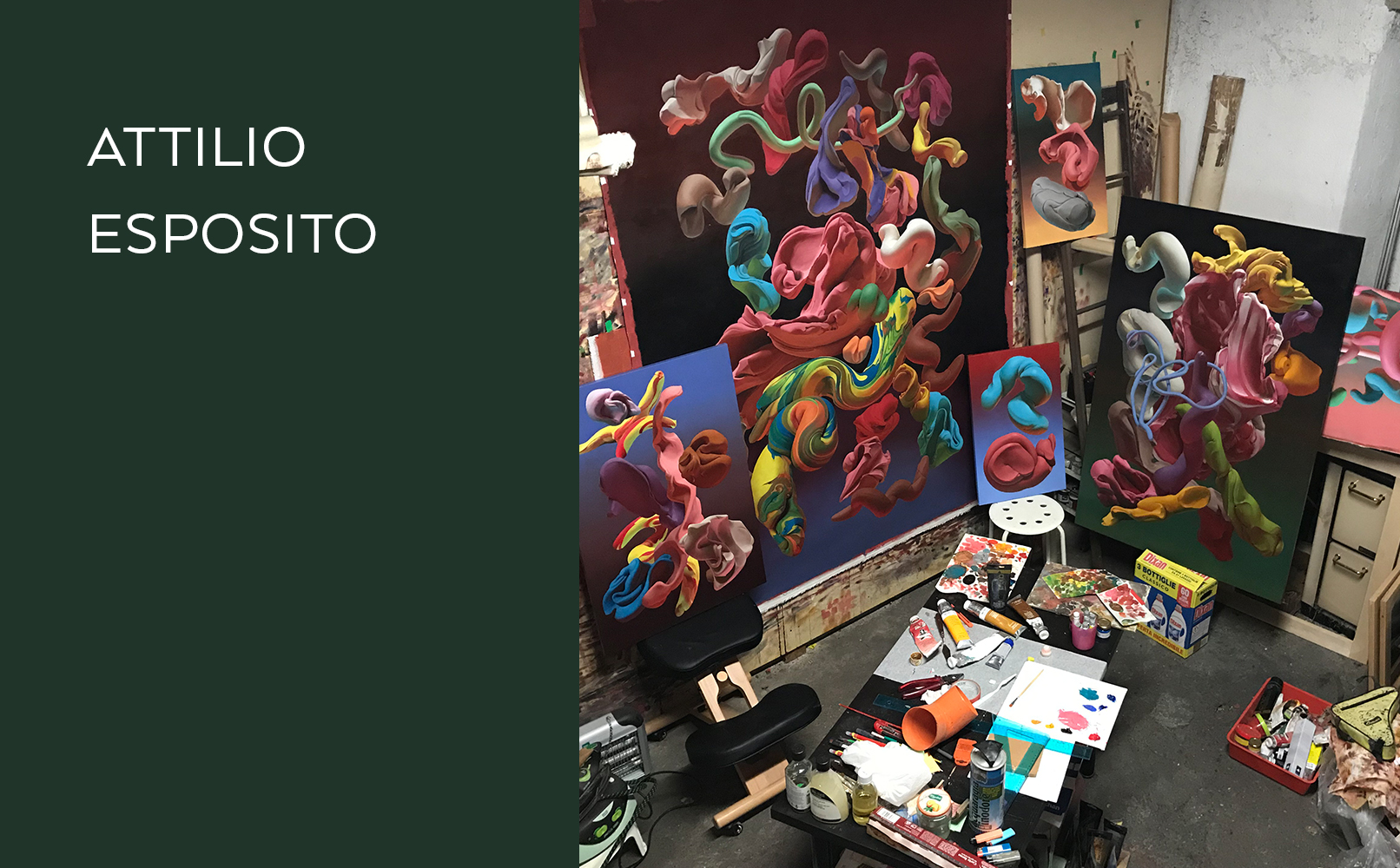
Italian contemporary visual artist Attilio Esposito creates suspended images in the embryonic state, building personal links between abstraction and stylistic academia painting. We met with Atillio to tell us more about his practice, growing up in Lecco, and the journey to the artist he is today.
I didn’t start yet. I mean , it’s a definition that I use, but only to point what I am doing, as a functional word, not an appellation. I feel like an artist when someone appreciates my work, but it doesn’t last long and I immediately go back being Attilio.
I’m Italian, I live in the district of Lecco where I was born and raised.
I was born in the early 1980s and experienced the economic boom as a child. Like so many from my generation, growing up among stickers, films, television and colorful toys, with the idea of a certainly magnificent and idyllic future. Summer holidays were always an adventure along the boot, in a camper with my parents and my two sisters, visiting magnificent villages, beautiful landscapes, folding maps, long but wrong roads, closed-end roads and some family quarrels but always with the head in the clouds. Adolescence with the advent of the internet and the very fast technological evolutions was the period in which I slowly returned to earth. As the world discovered how to transmit more and more information faster and faster, we were starting to walk alone, without having the ability to hide our pimples and our deep sense of inadequacy.
I never accepted to lose those feelings of security, adventure, continuous discovery, even if since years I relocated permanently on planet earth.
In my works there is the continuous effort of a positive approach to a reality of dissatisfaction and the acceptance of the sense of inadequacy.
I have always enjoyed drawing and creating, attending an art high school and then a fine arts academy was a natural choice. When I was just twenty, I had the opportunity to start my artistic career after winning a painting award. I learned a lot but having had these possibilities quickly, pushed me to detach myself from the world of art, doing other kind of jobs to get to know myself, to better understand my needs and my languages.
I am currently focused on this creative process which is closely linked to my state of mind and my attempt to bring to the surface a positive and constructive approach to internal chaos, to the absence of security. I strive to always find new compositions, more or less subtle links between colors and primordial shapes, in suspense between the primitive form and a meaning. In the same way, I believe that I seek a balance in a life that is too fast and doesn’t offer eternal points of reference.
My current aesthetic is certainly linked to Italian and European pictorial, sculptural and architectural production from the Renaissance to the Baroque and Rococo but with deep roots in modern abstract painting. From ancient history I take the sense of order and balance that during more than 300 years has been able to follow the evolution of the sense of beauty. The painting of the 20th century has given me a conceptual reading and that subversive, revolutionary freedom that I need to create the raw material for my work.
Are your works planned? What do you want people to take from your work when they view it?
In my creative process I like to allow both creative freedom and planning. I have kind of three steps, ranging from the wildest and most primitive to the most careful and accurate. When I model plasticine I allow myself the freedom to not give myself an aesthetic guide, planning and control come later, when I start creating the composition and especially during the painting phase. The title comes last and is my personal reading.
I heavily rely on the primitiveness of forms to establish contact, create an image in which everyone could recognize their thoughts. Shapes that don’t keep the signature of those who molded them but that at the same time are intimate.
In this pictorial series, I heavily rely on the idea that the social context and the people who observe it define the true meaning and importance of a work. I reserve the task of producing and being creative without planning too much.
Who and what are your greatest influences?
Mentioning the artists I look at in this period, I would say Pontormo, Giovanni Battista Tiepolo, Pieter Paul Rubens, Canova, Cazimir Malevič and Alexander Calder, but they are just a few, I observe and appreciate a little of everything. I can find new inspiration by watching a documentary on TV as well as taking a walk or just listening to a song.
What are your ideal conditions or catalyst for creating a “good” piece of work?
Dissatisfaction, the desire to change is an excellent engine when there’s possibility to concentrate on work, without too many distractions.
The space in which I work at the moment is messy but at the end of each painting I always try to regain clarity by putting everything in order and then starting to work again.
What events in your life have mobilised change in your practise? How has your art evolved?
I like to experiment, these works are the result of experimentation themselves , I’ve already in mind several possible evolutions of this work but I continue to accumulate in my head new groups to paint and at the moment I want to continue with this process. I’ve tried to make other kinds of works in the past and I am sure that when I’ll feel the need I will do it again.
I really like the ready-made’s evolutions in the contemporary world, not everything lends itself to being painted even though I am certainly very attached to this medium.
I appreciate the dedication and commitment of painting.
What are your goals for the future?
I’m planning a new group of works always linked to this series.
I would like to continue exploring this language for a while, investigating and evolving my creative process, as I’ve accumulated a lot of possibilities . I’d like the opportunity to prepare a solo show, to see them all hanging at the same time.
Then of course, like everyone else, make a living off of what I love to do.
How have you been keeping creative during the pandemic?
I haven’t been very creative, finding myself live in an apocalyptic film made me slow down a bit. At the beginning of the epidemic, I was coming out of a very productive period in which I didn’t leave home much. The quarantine caught me off guard. I appreciate those who have managed to be productive, personally I have not been able to create much in such a state of alarm.
